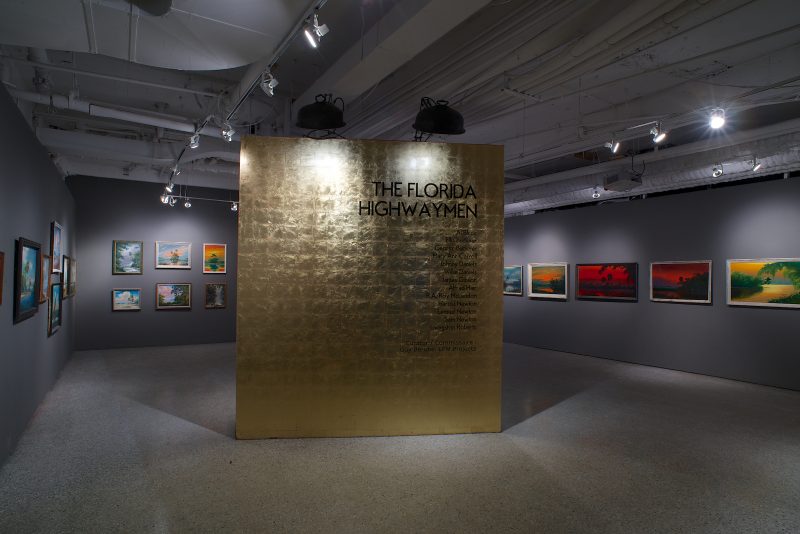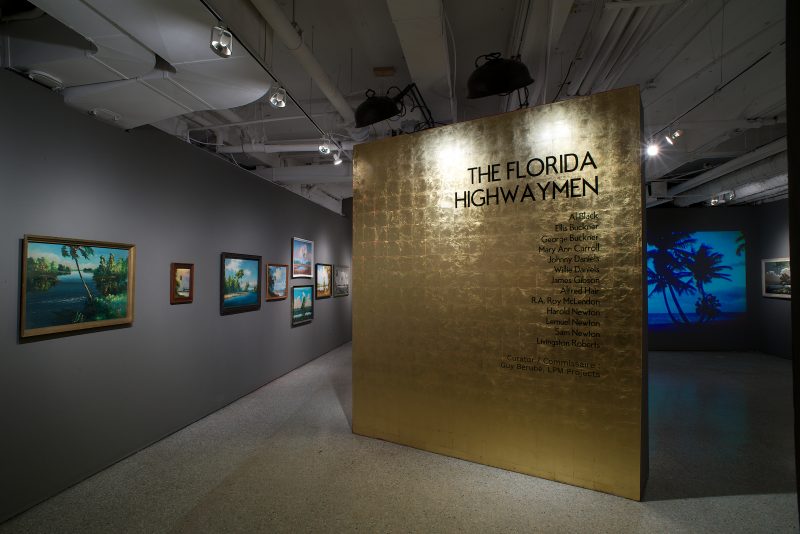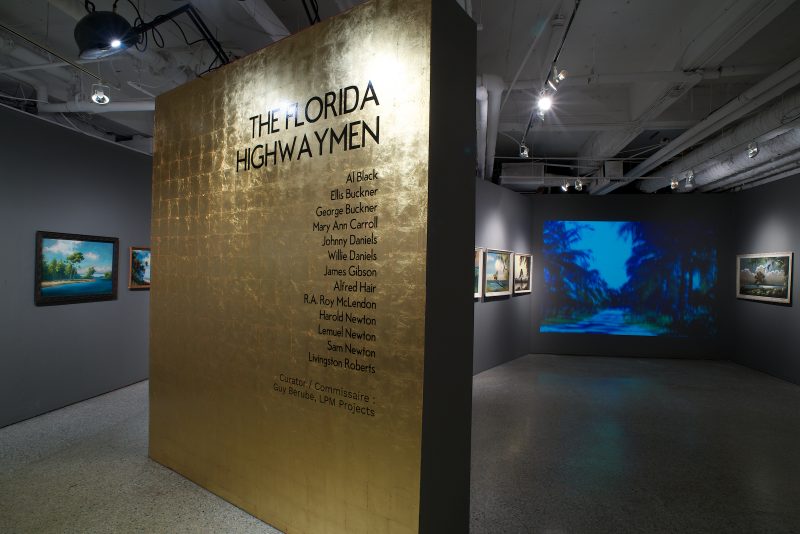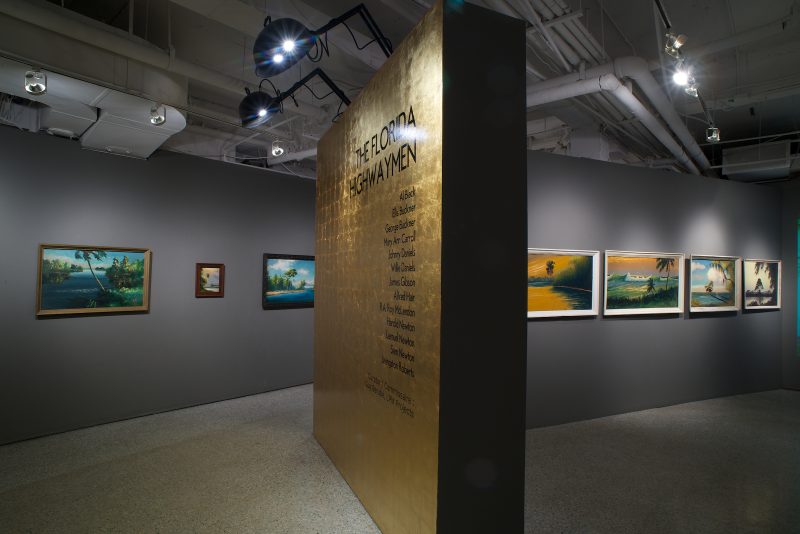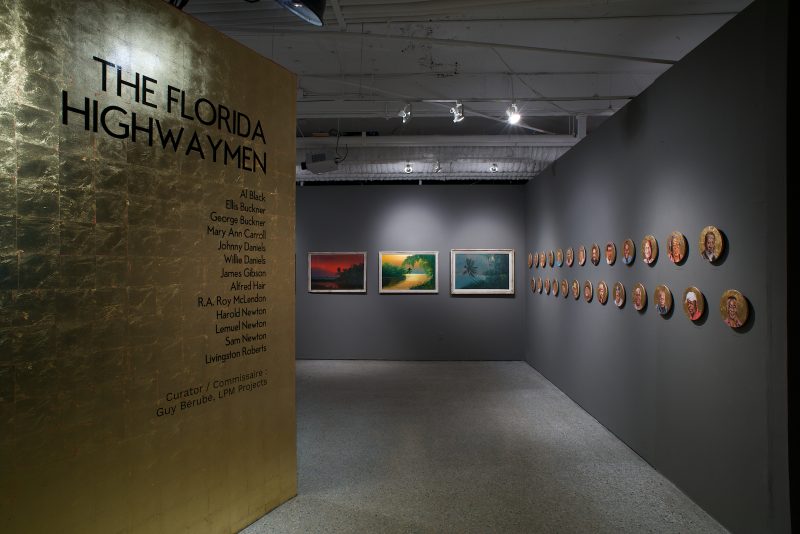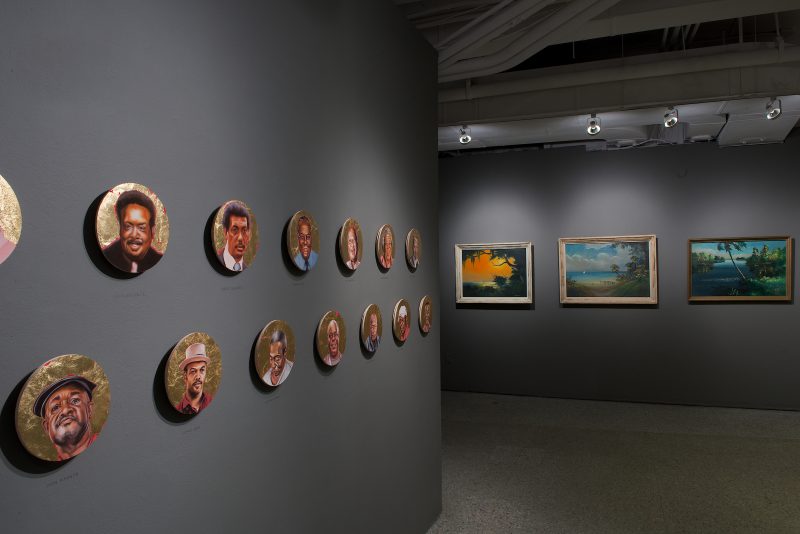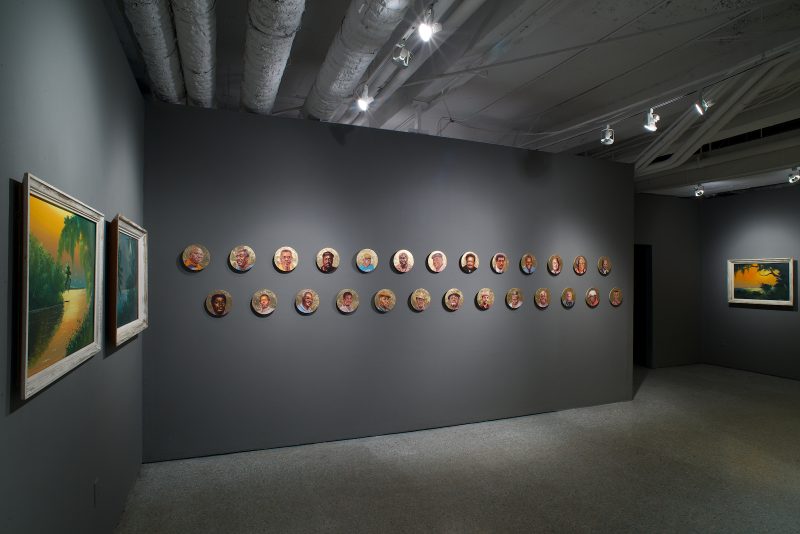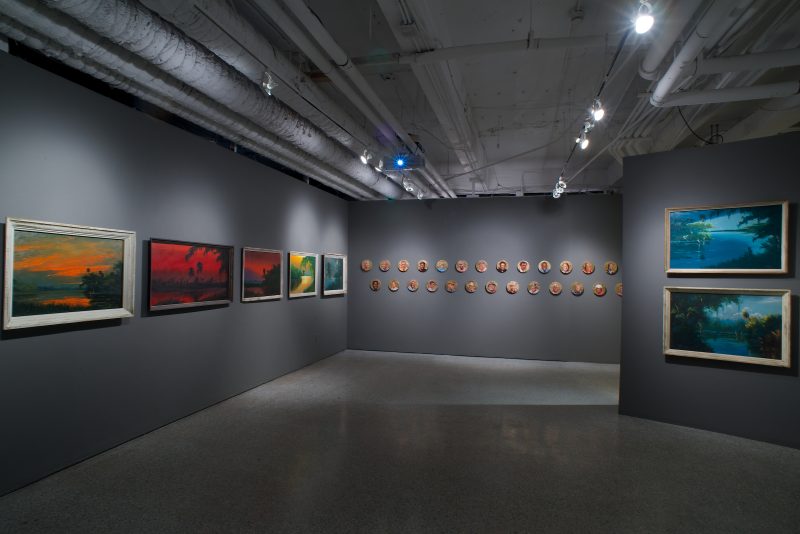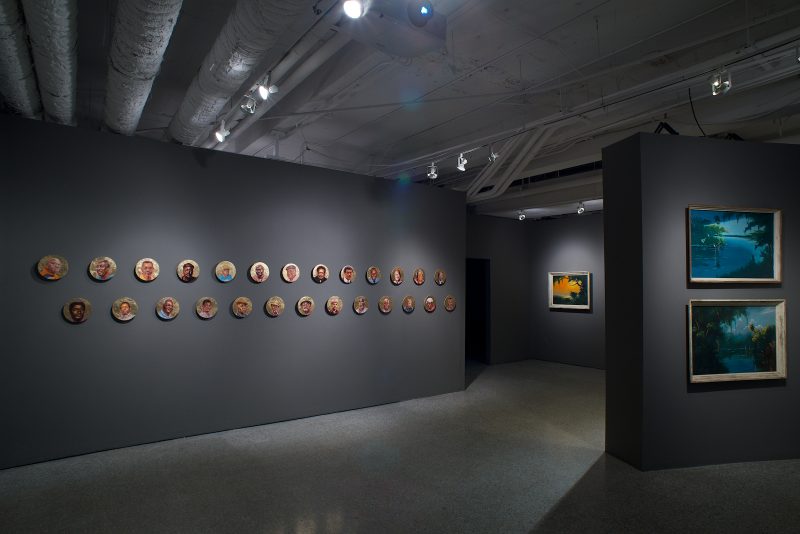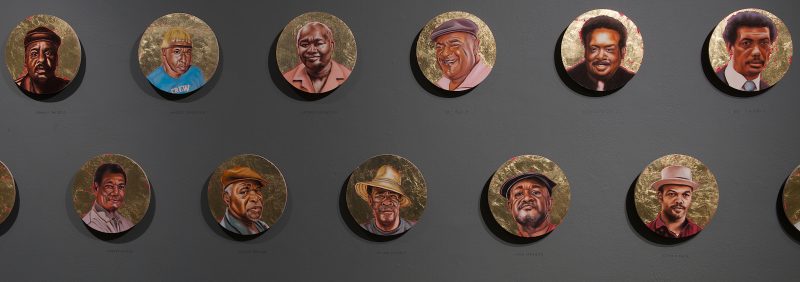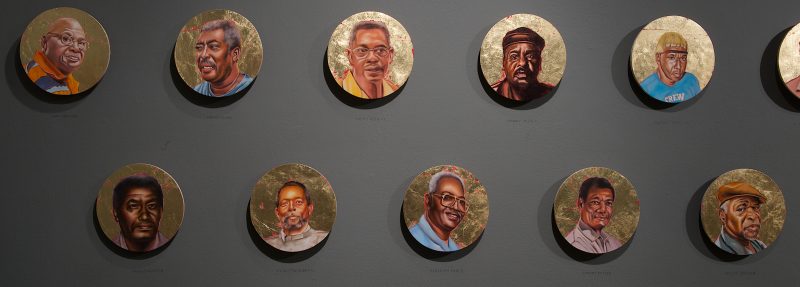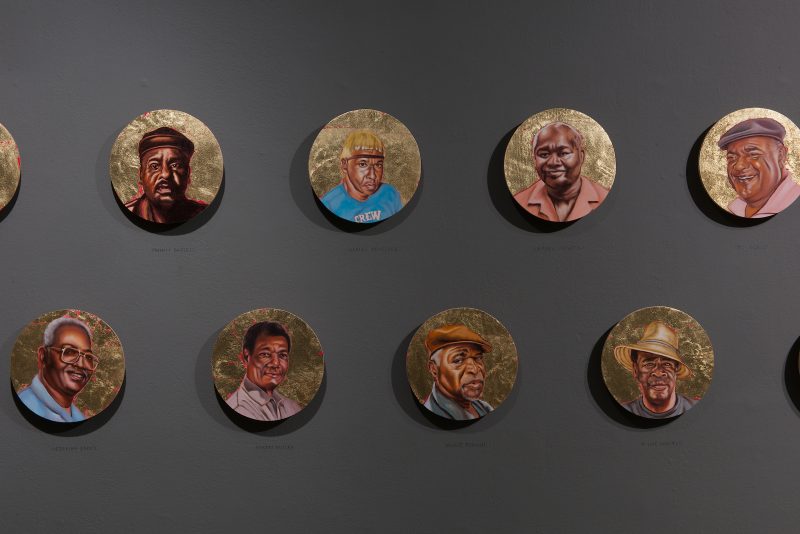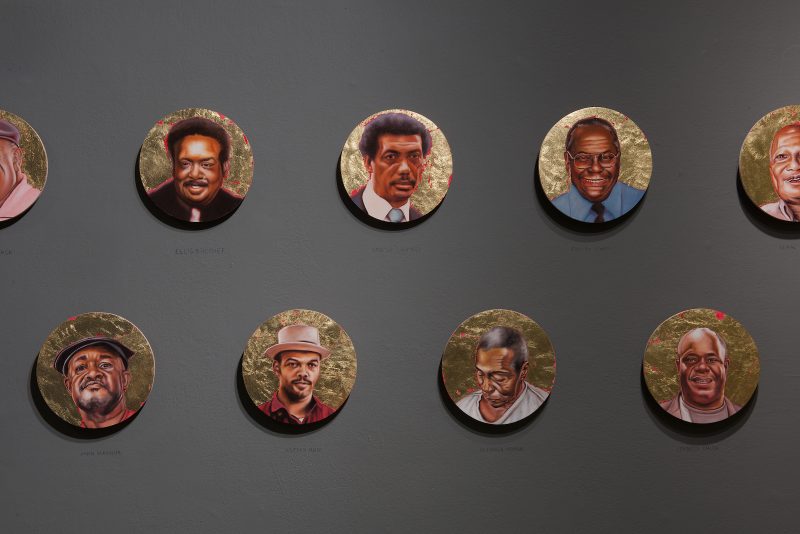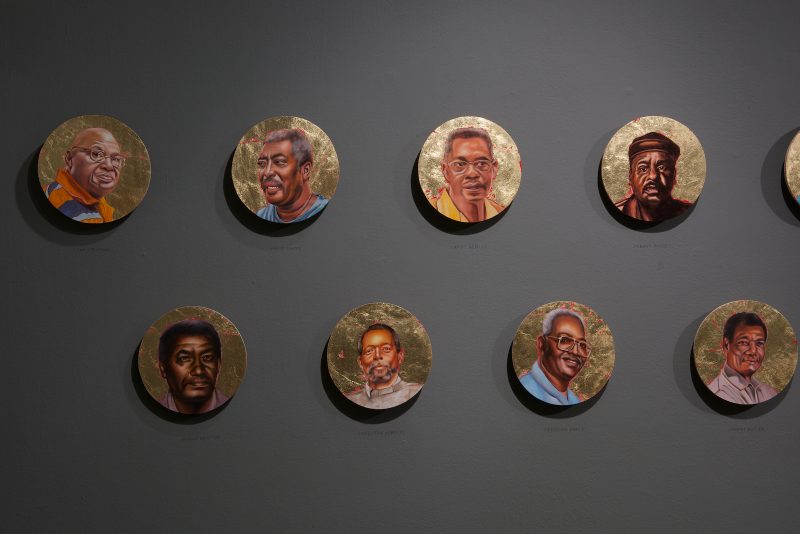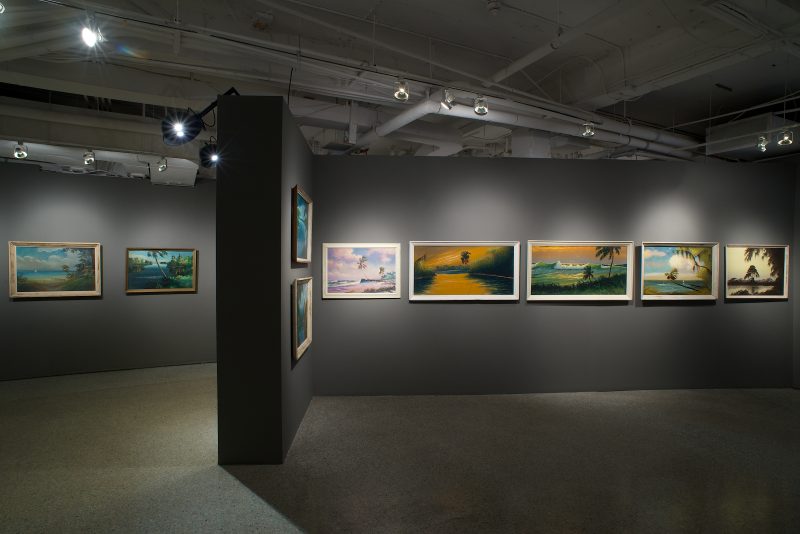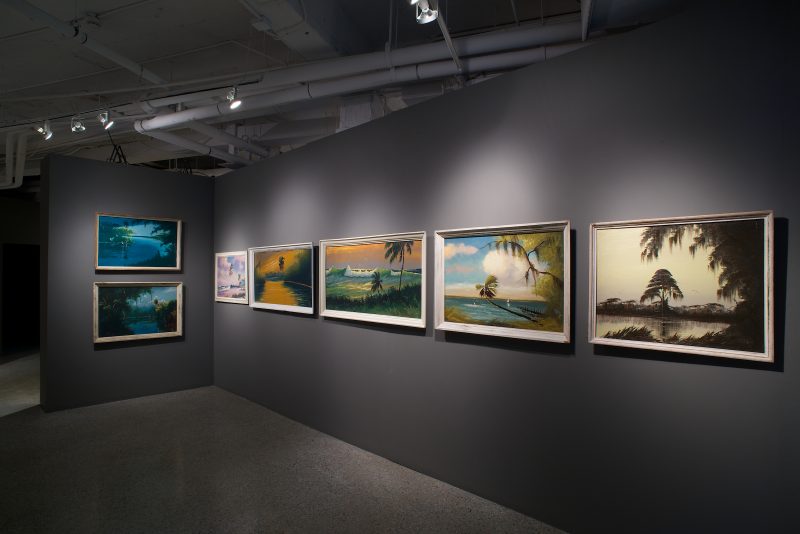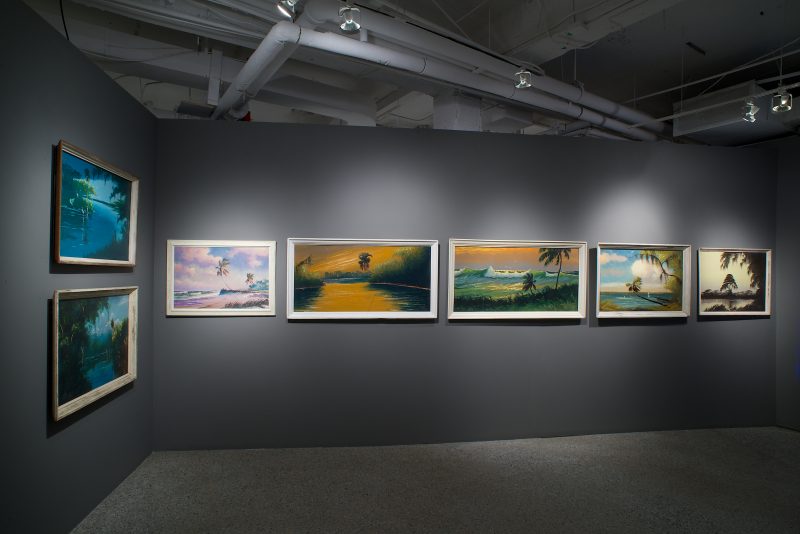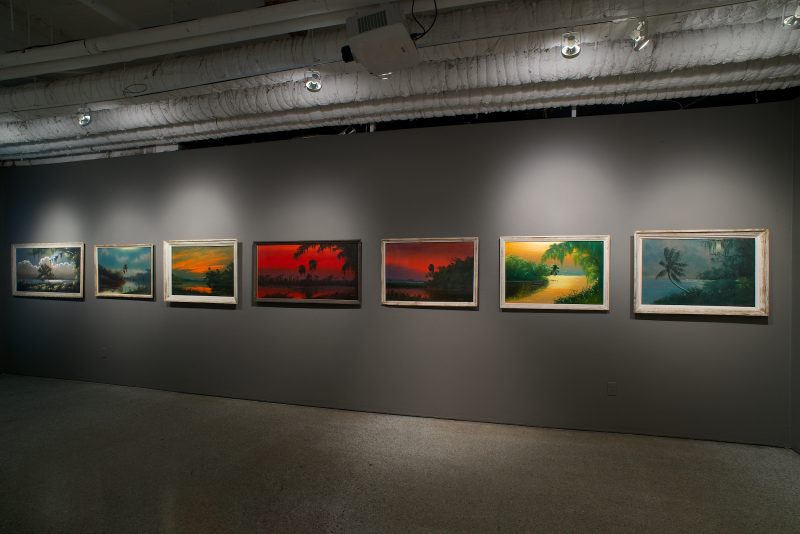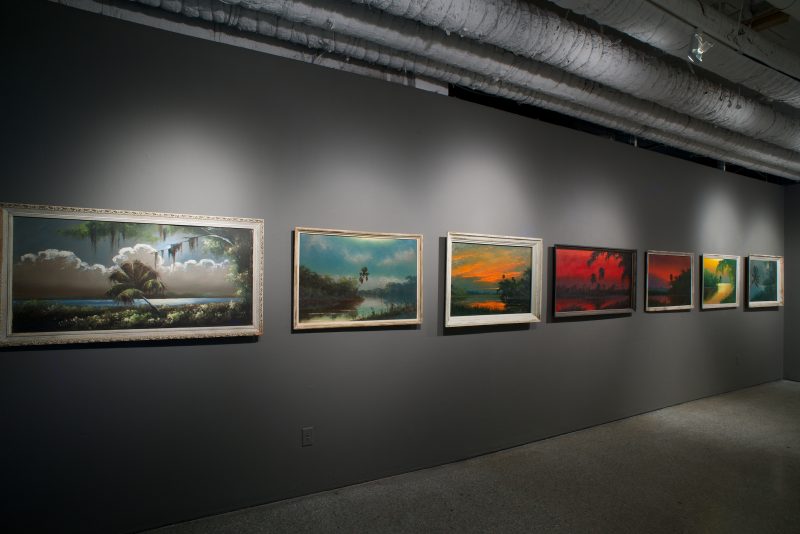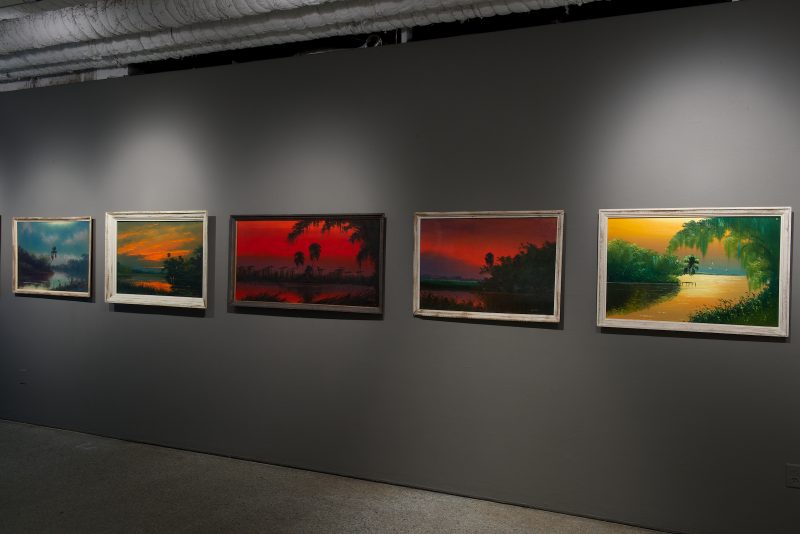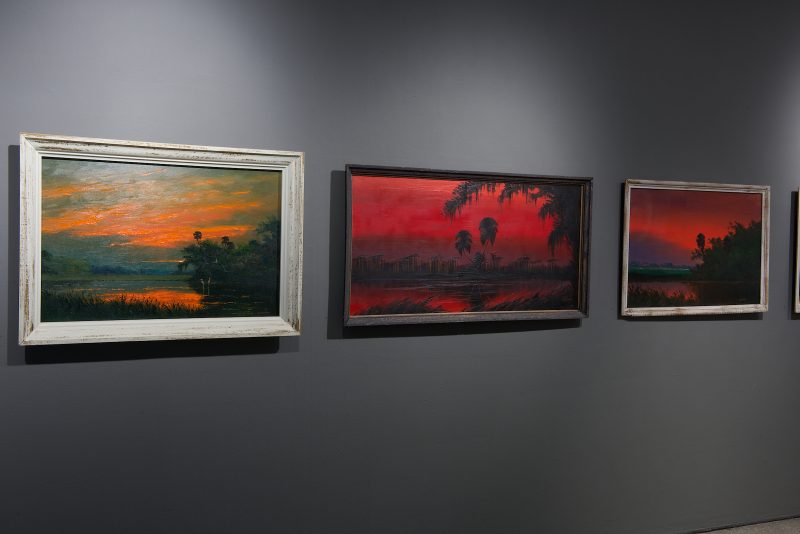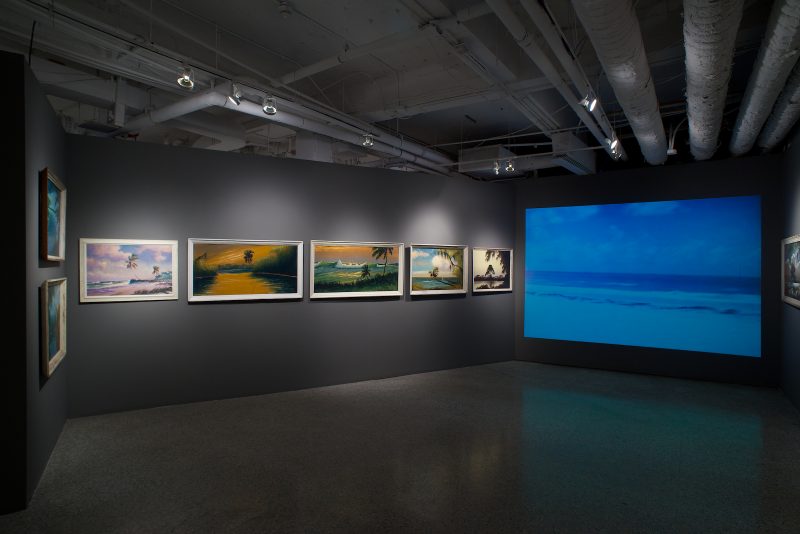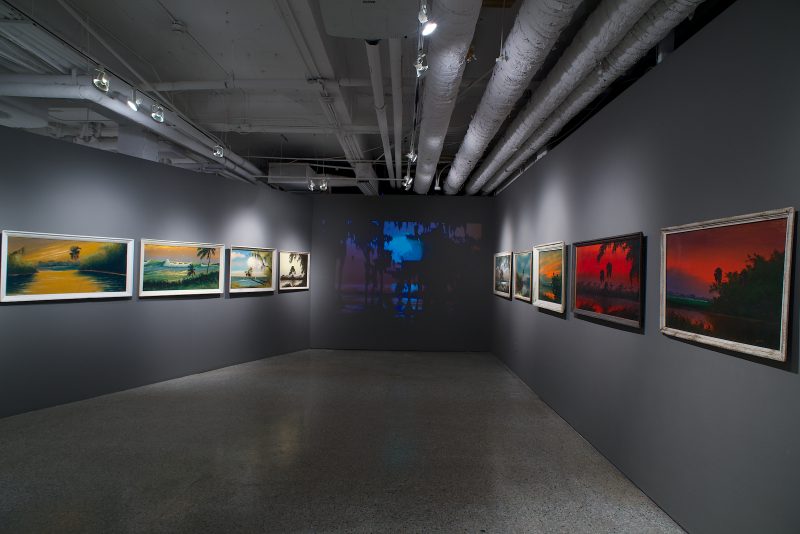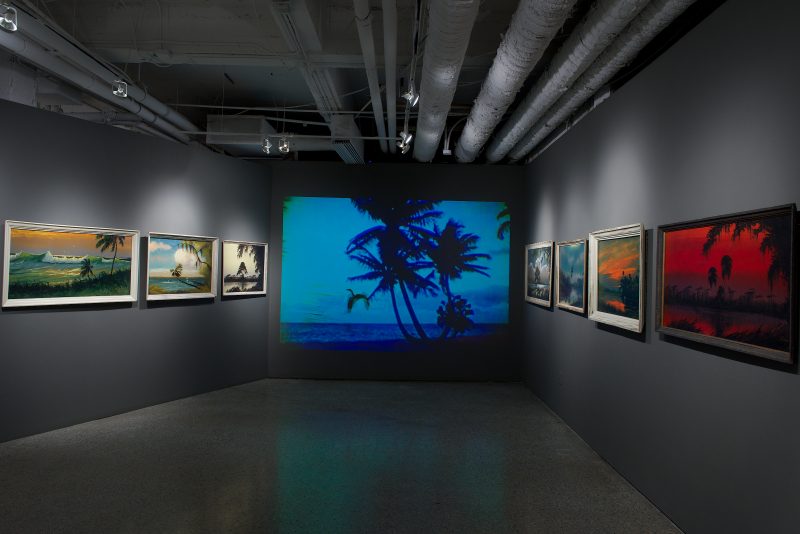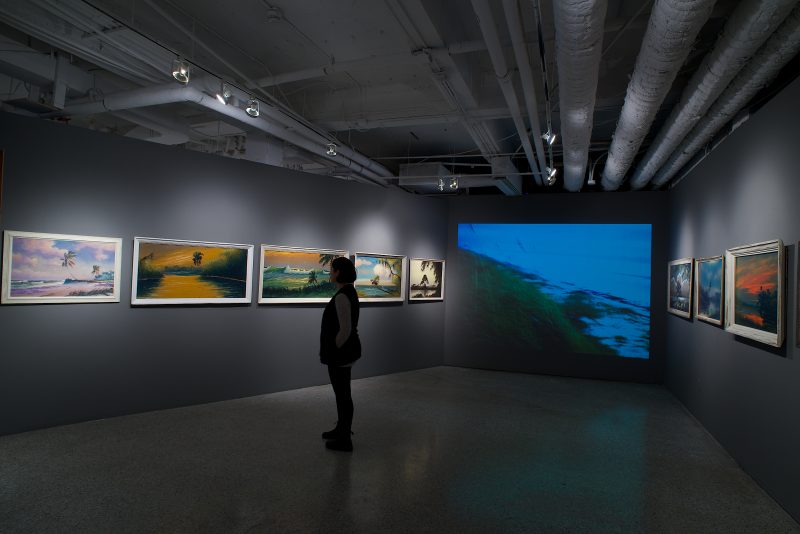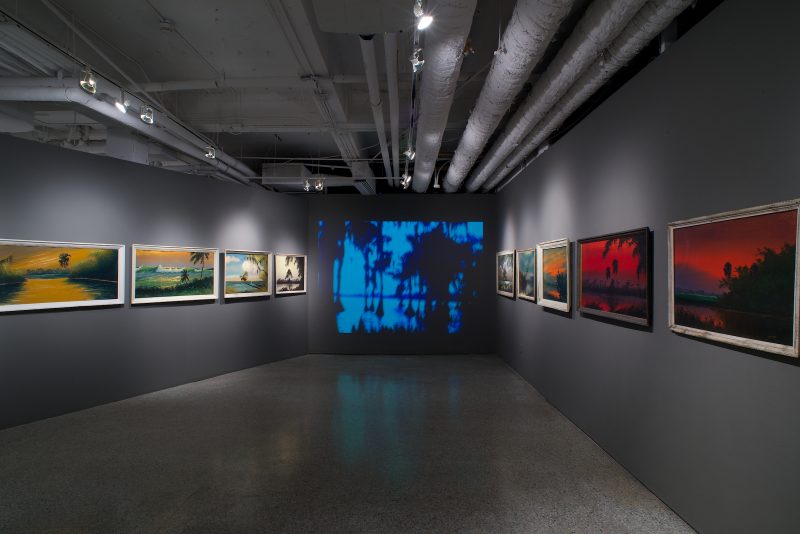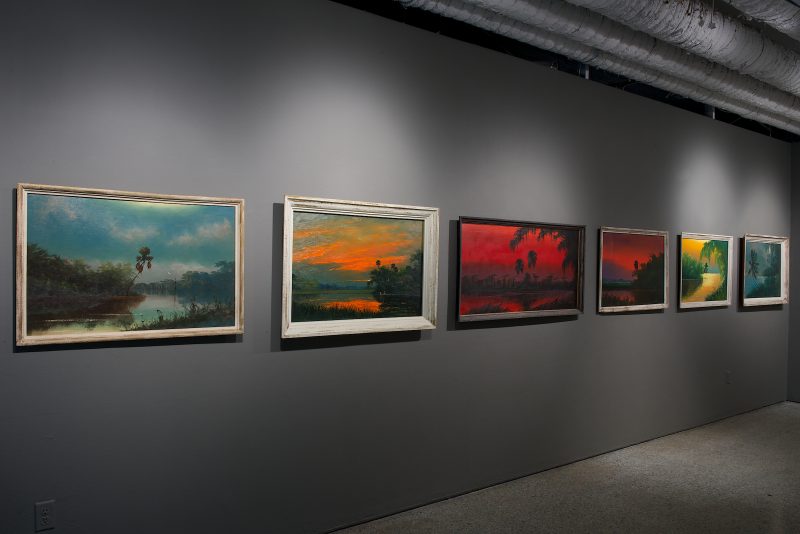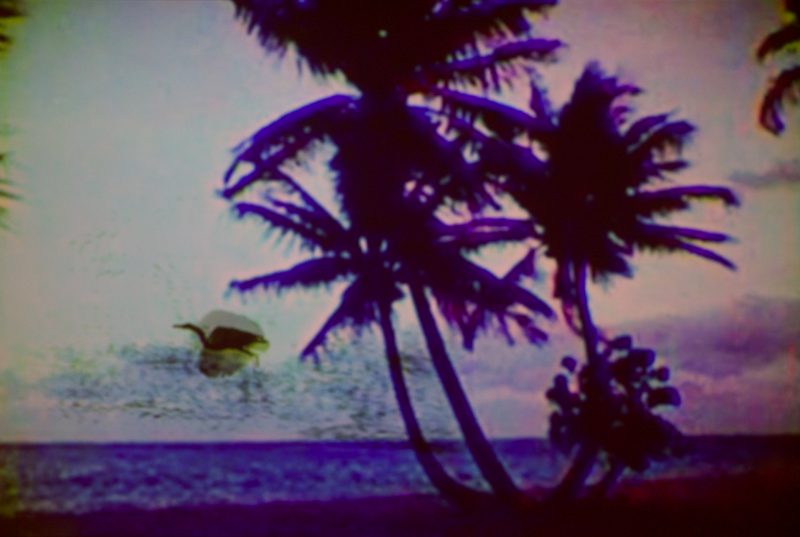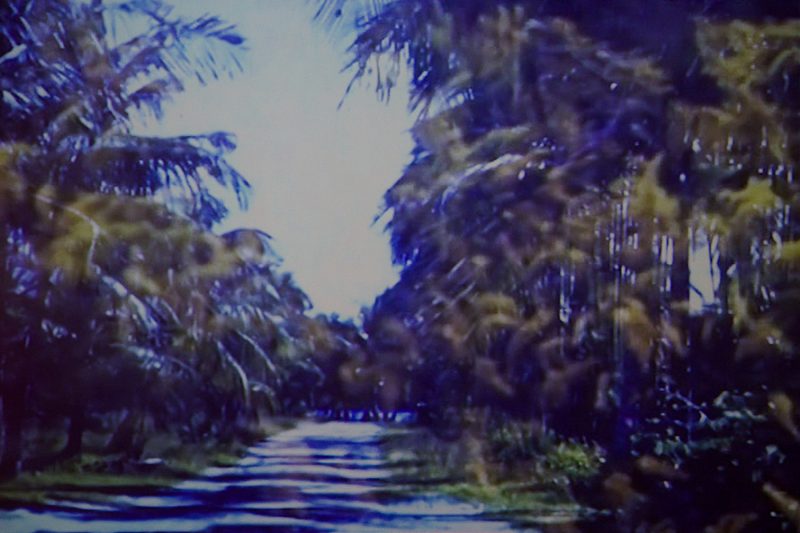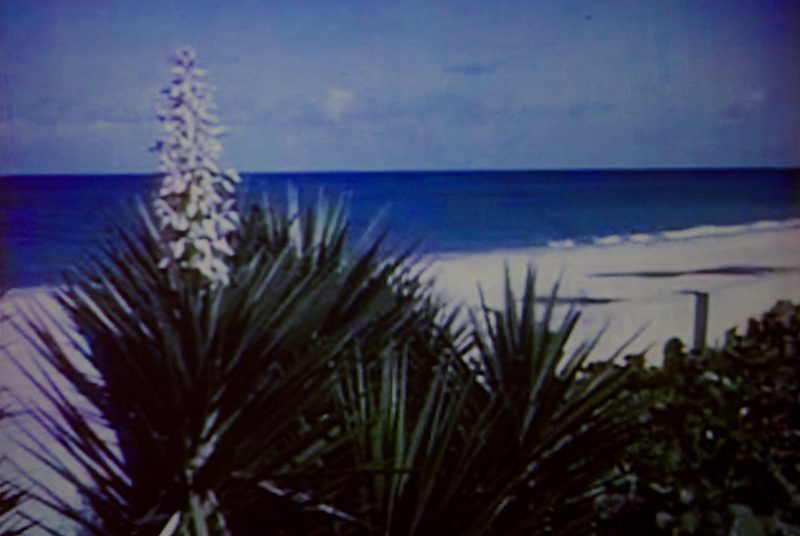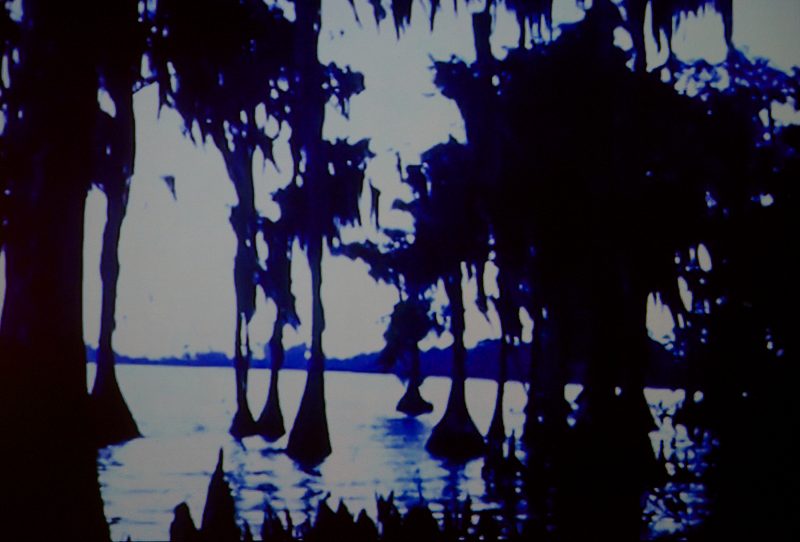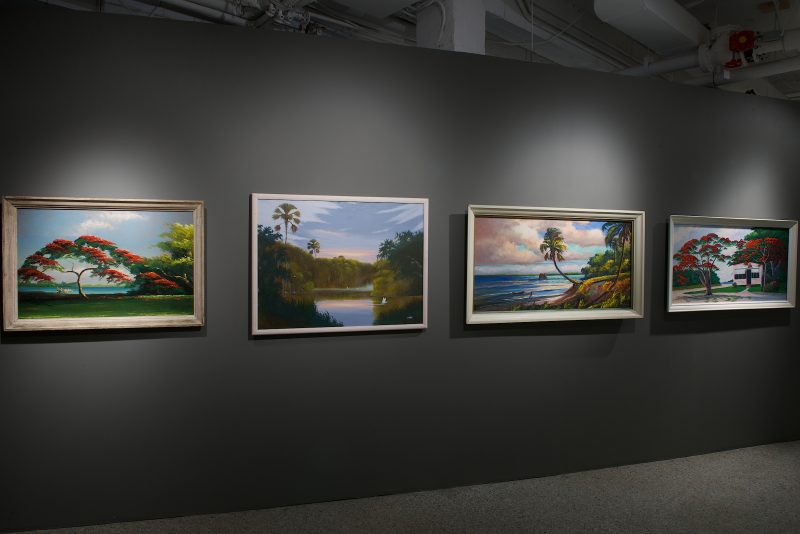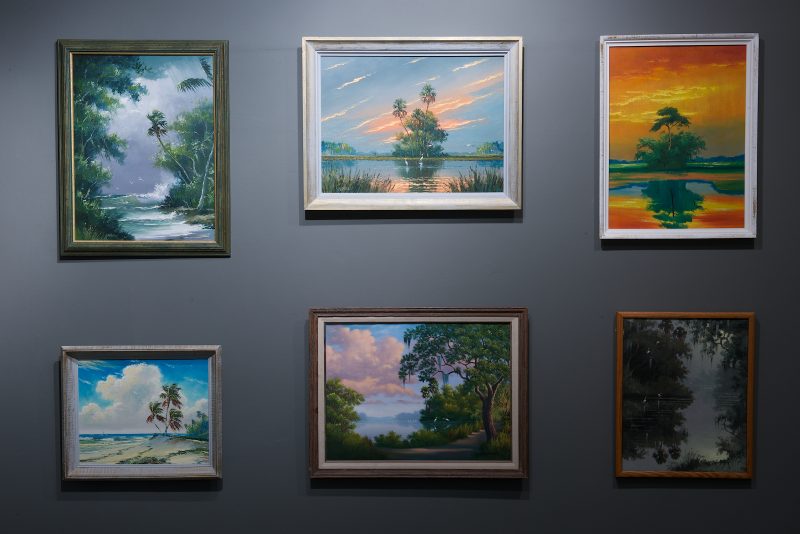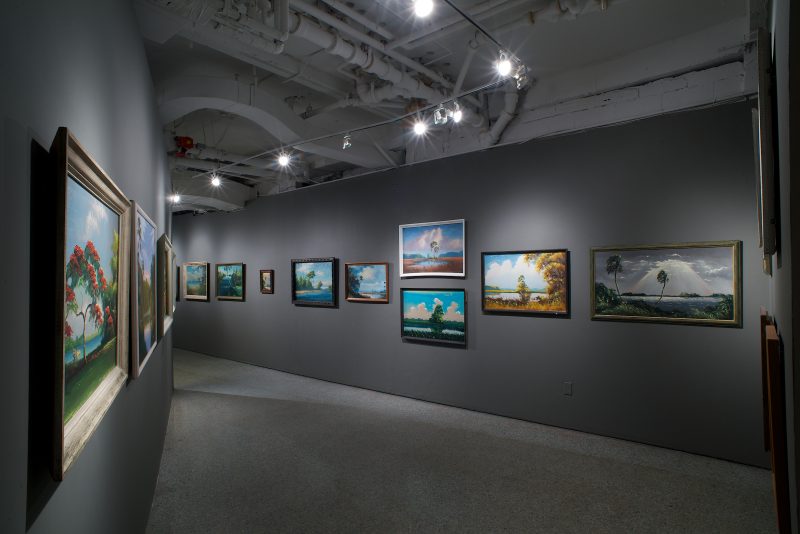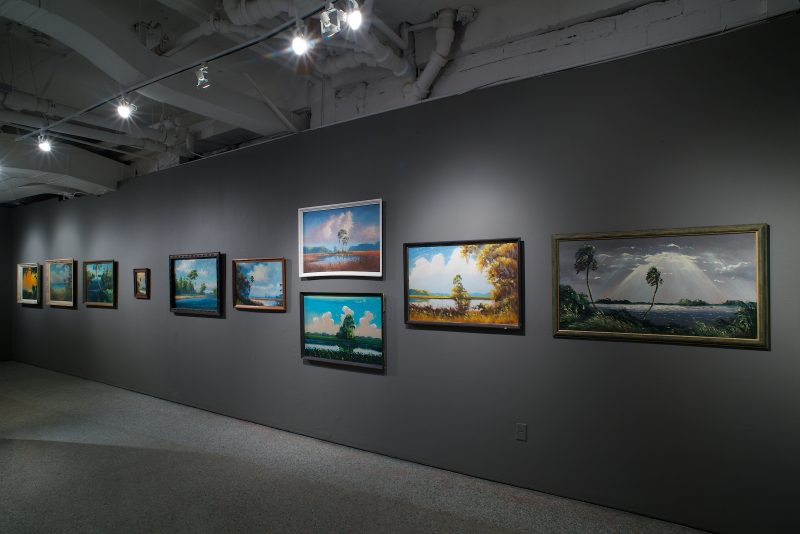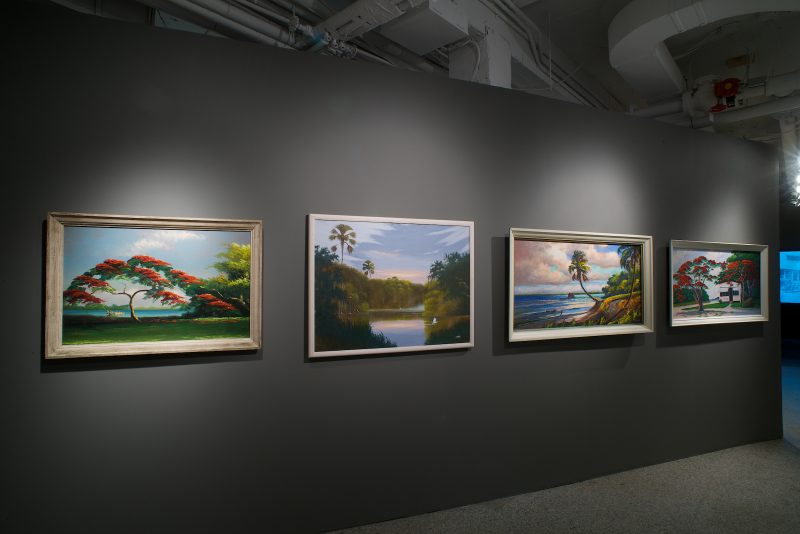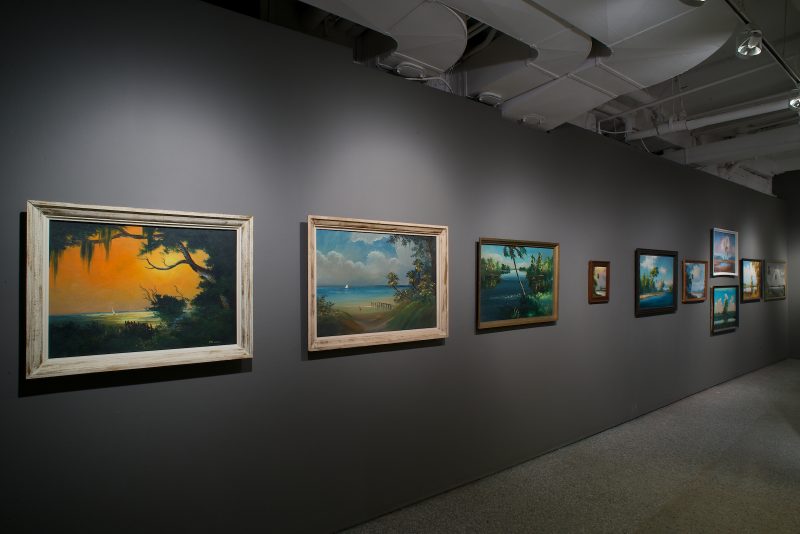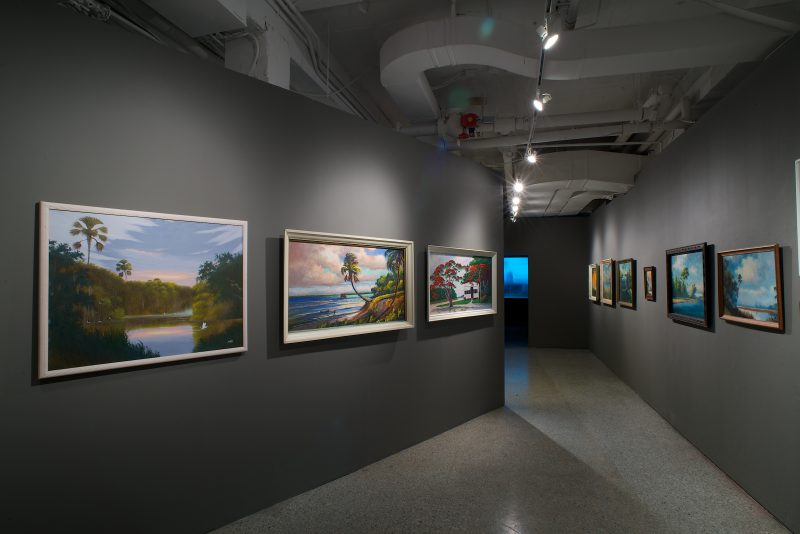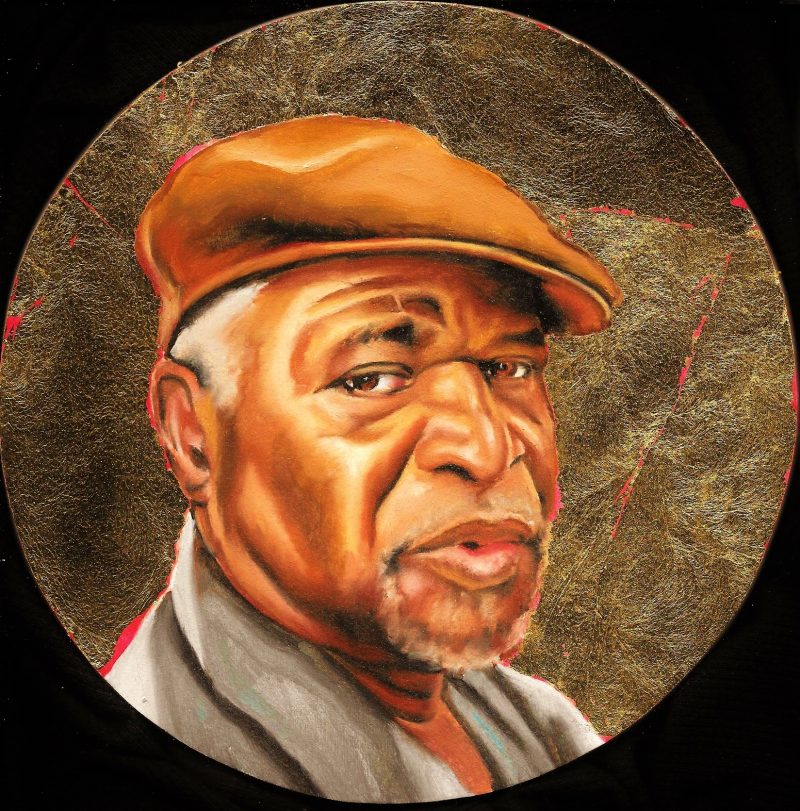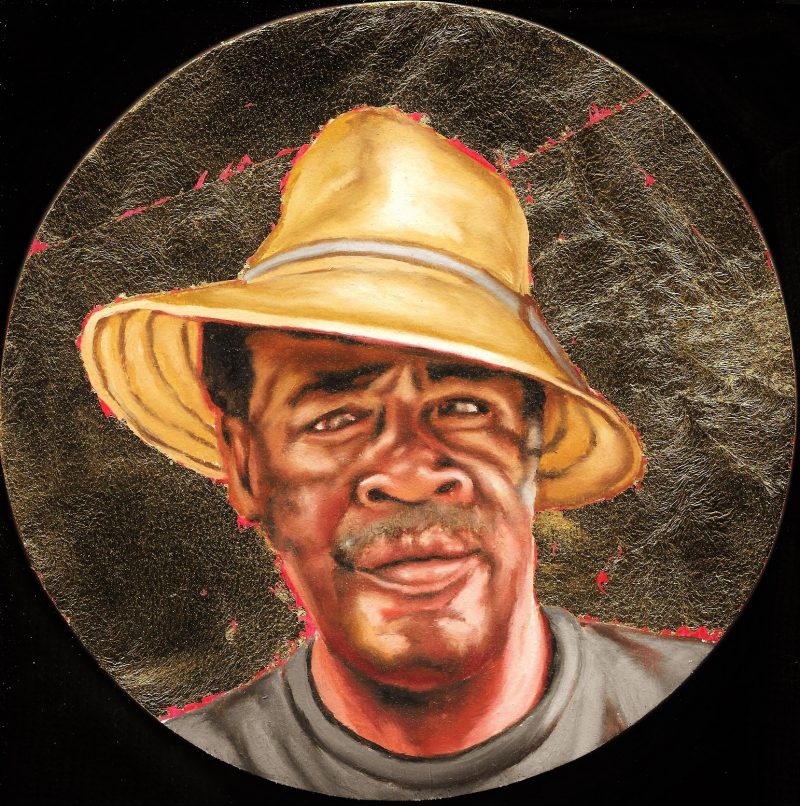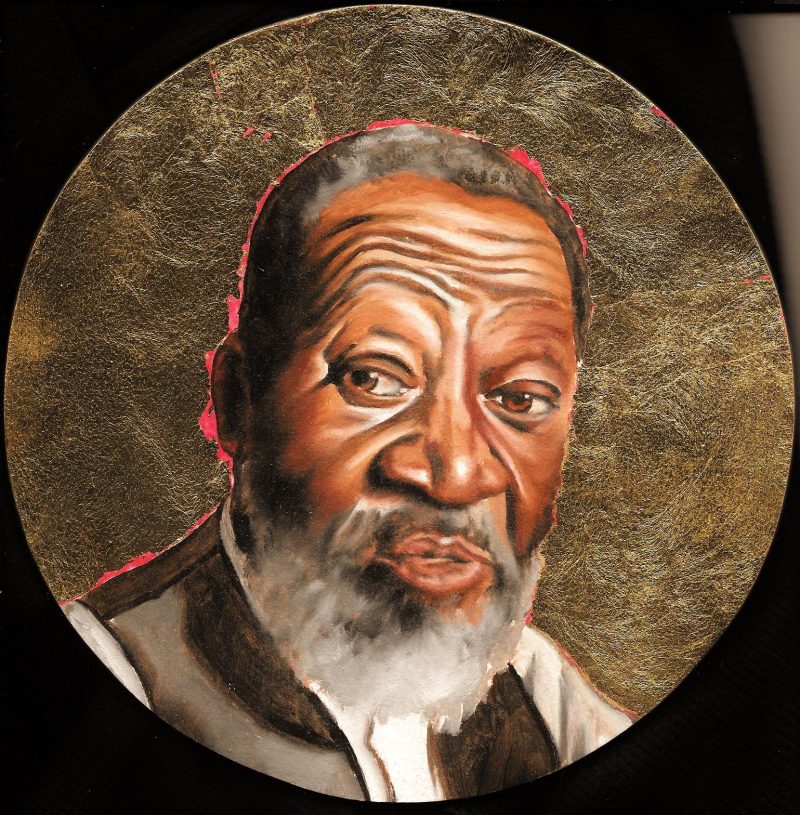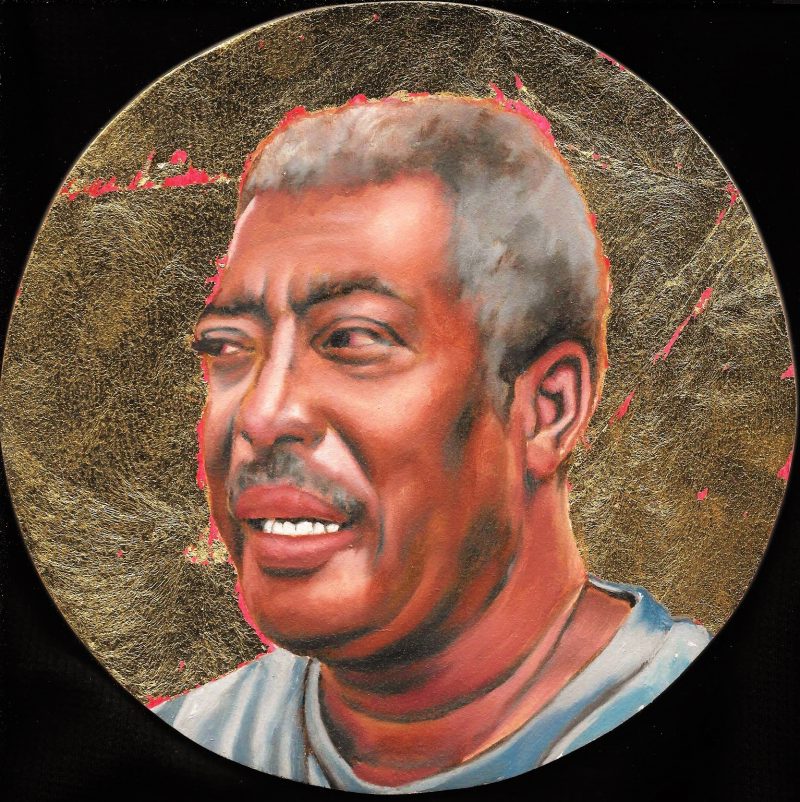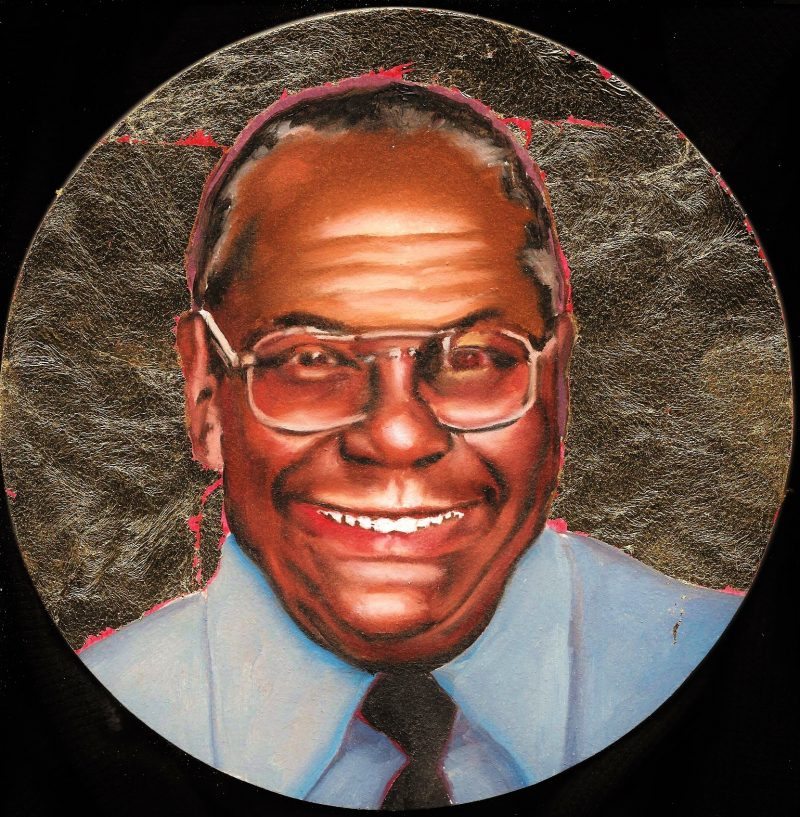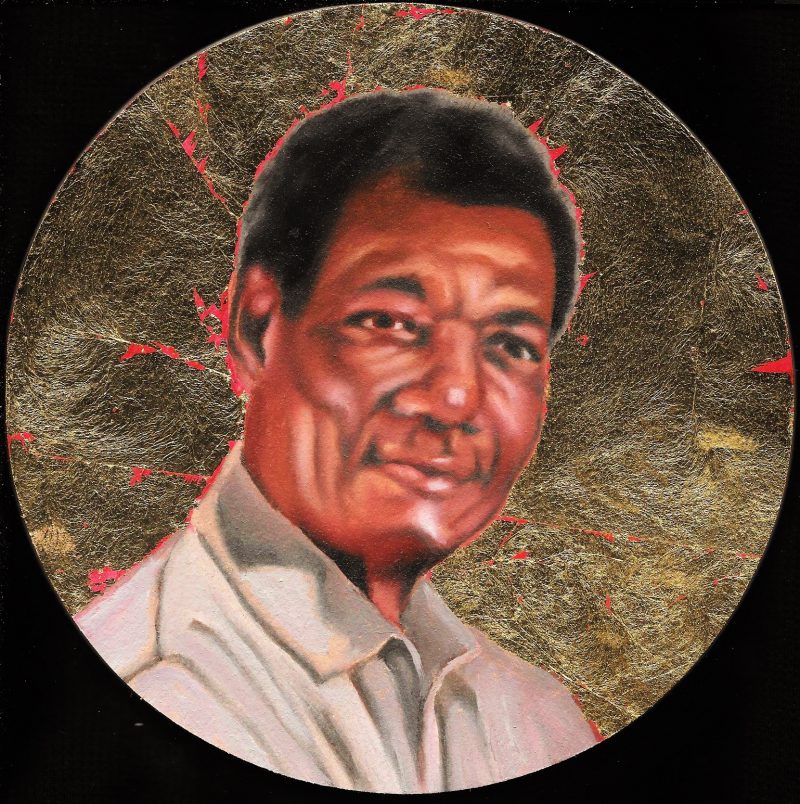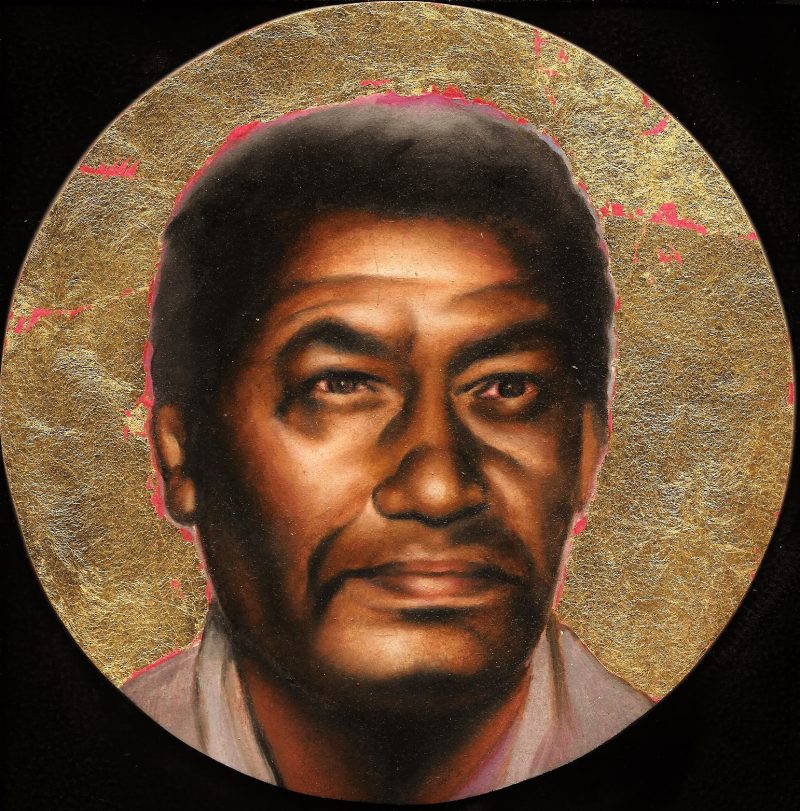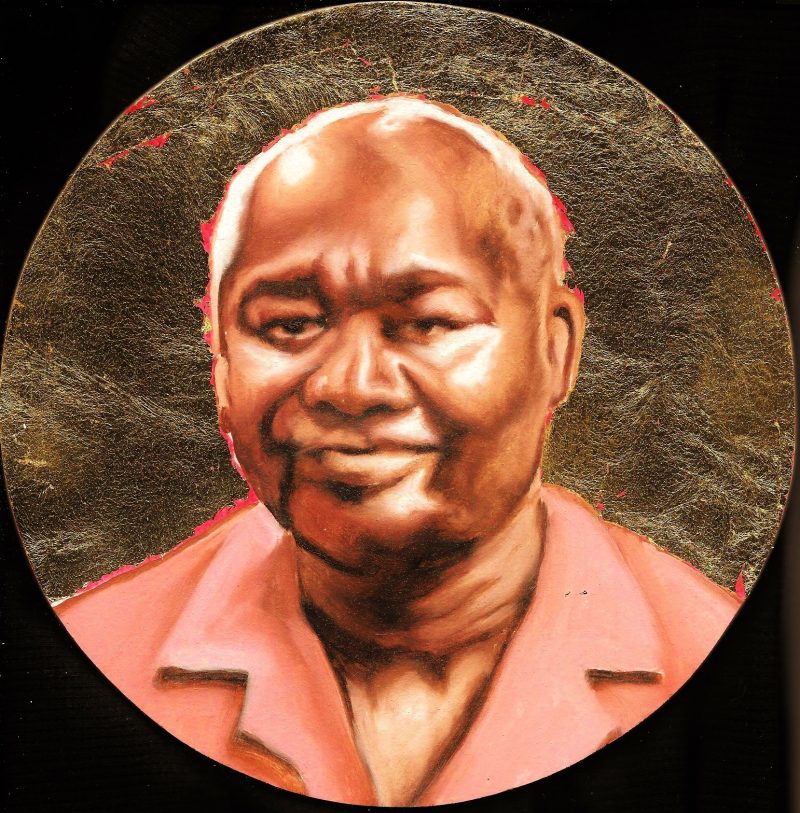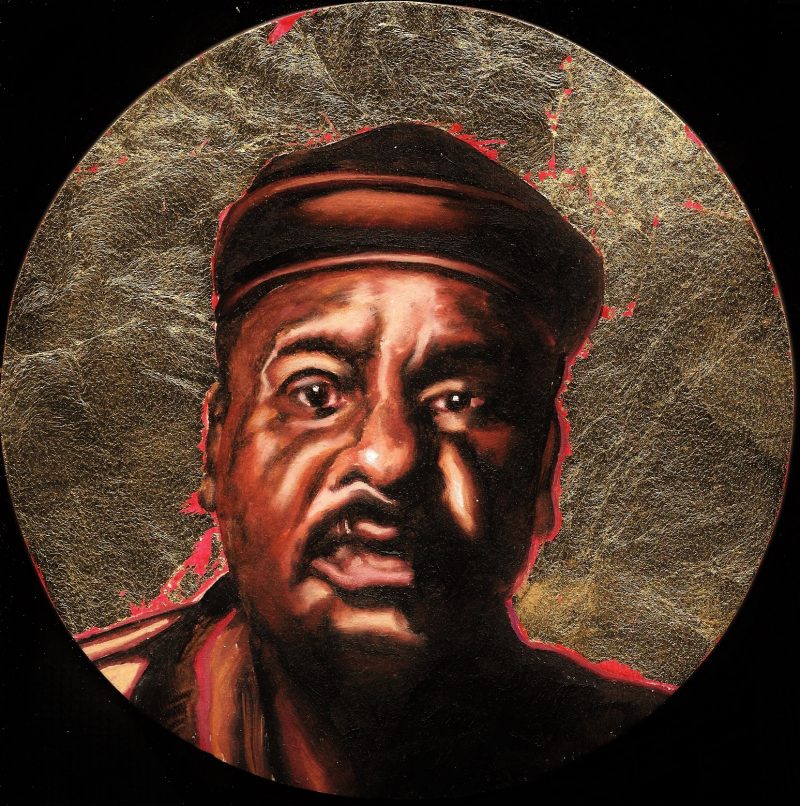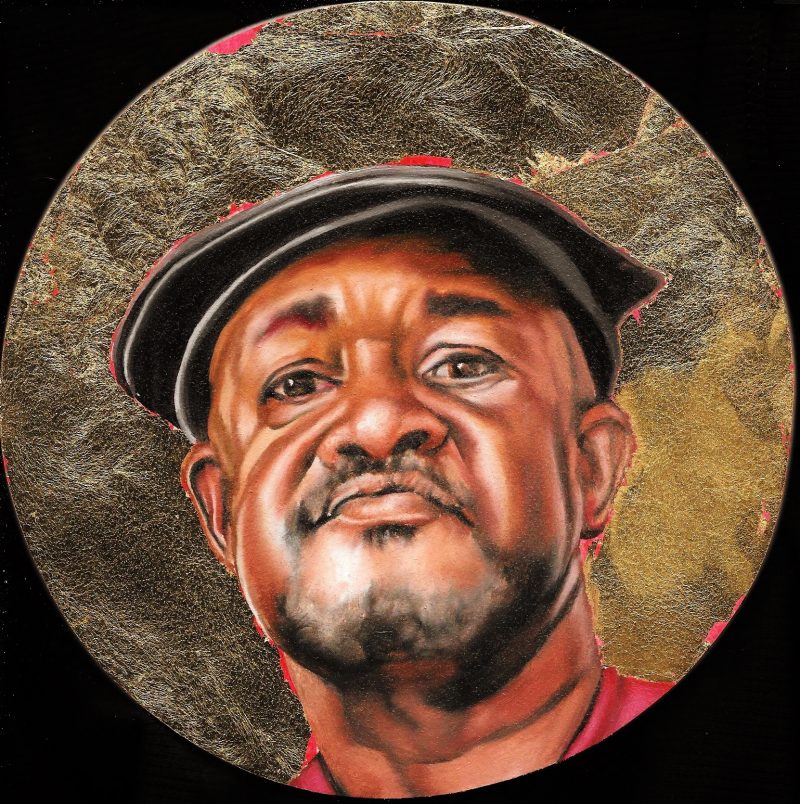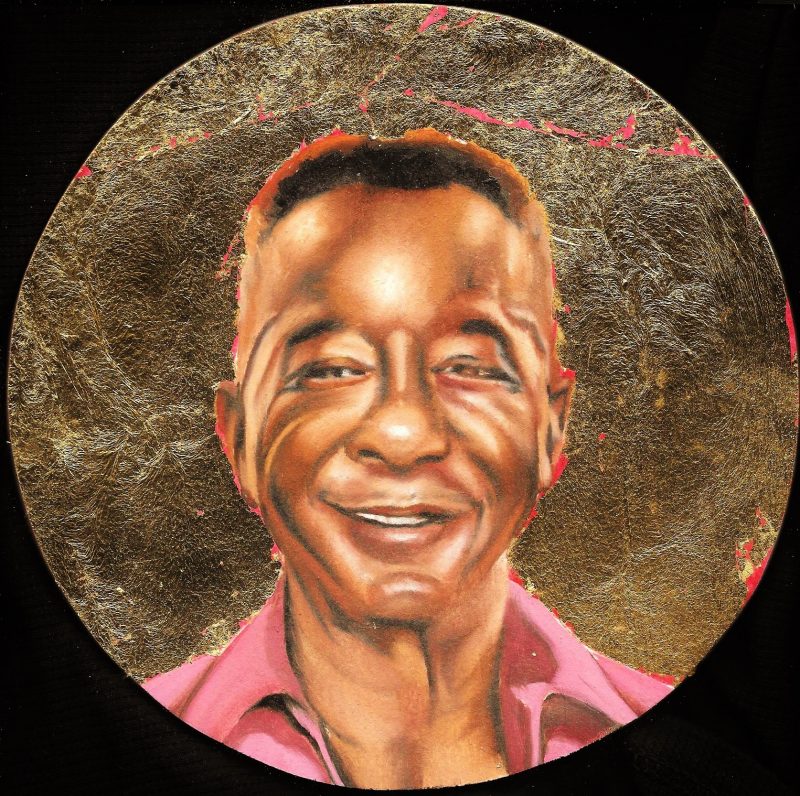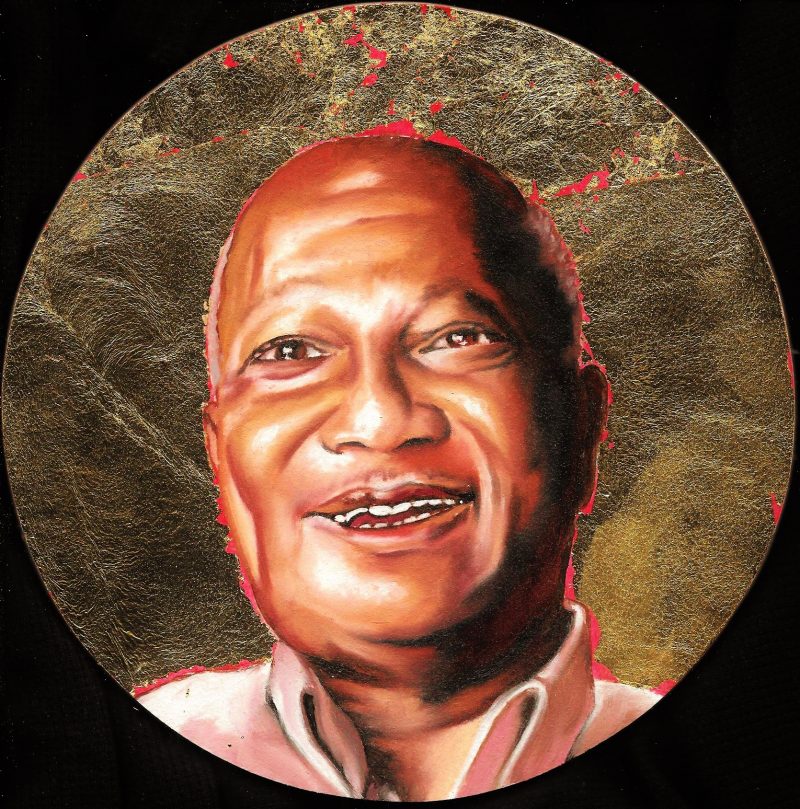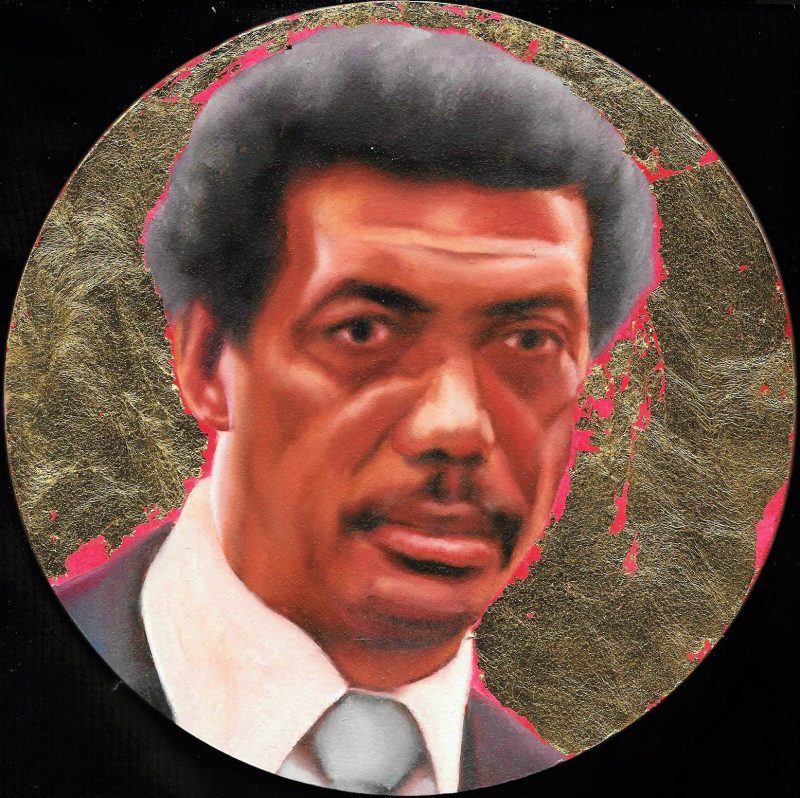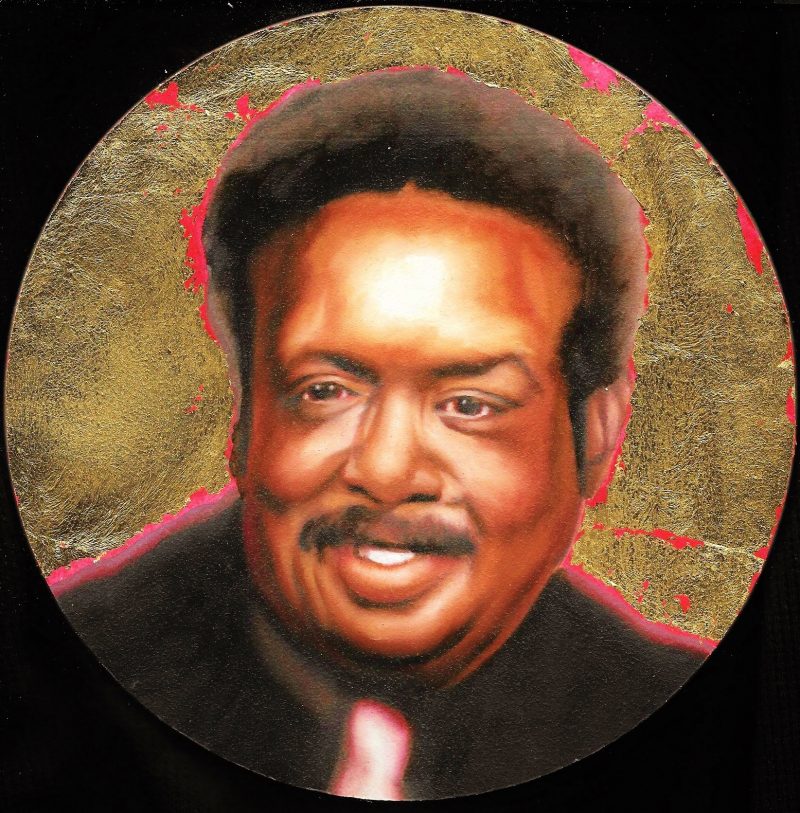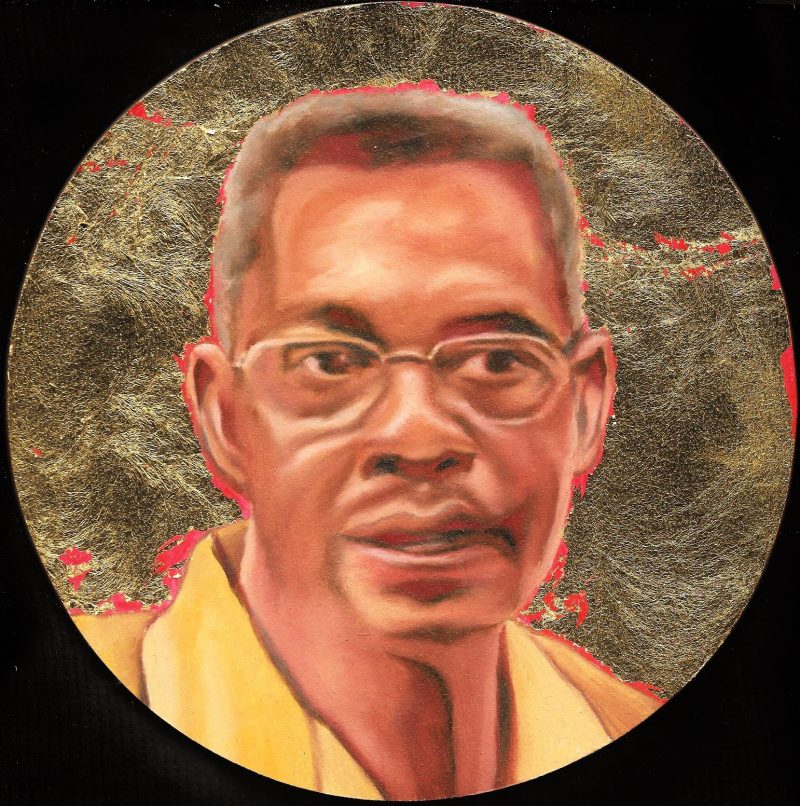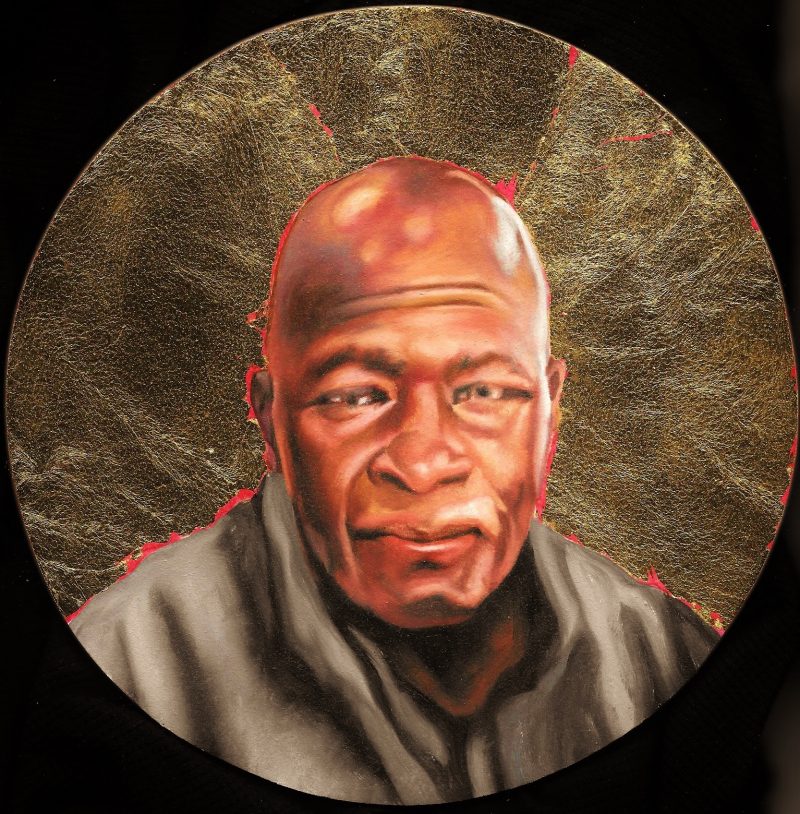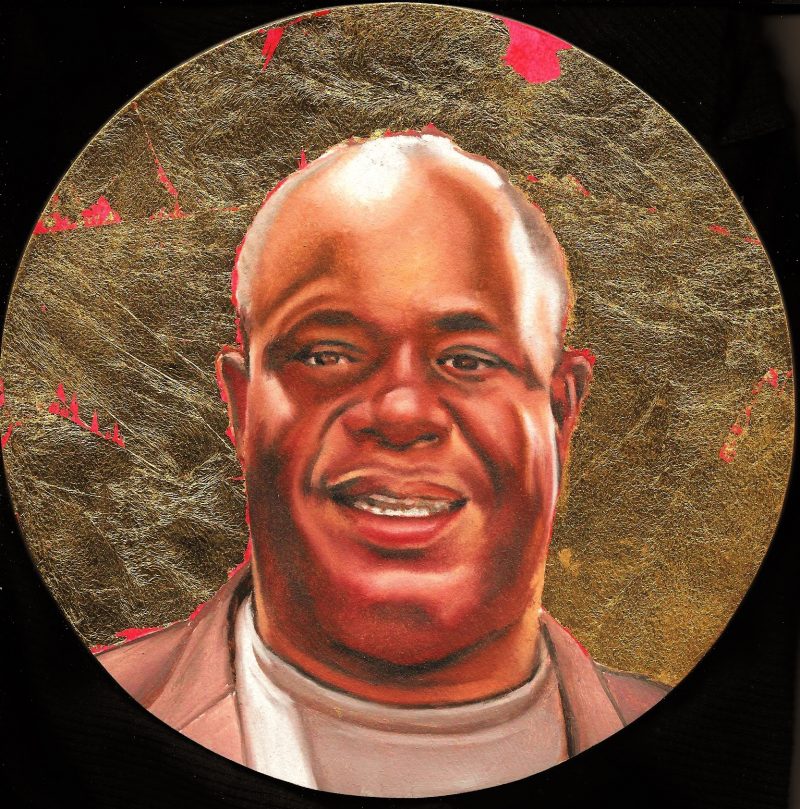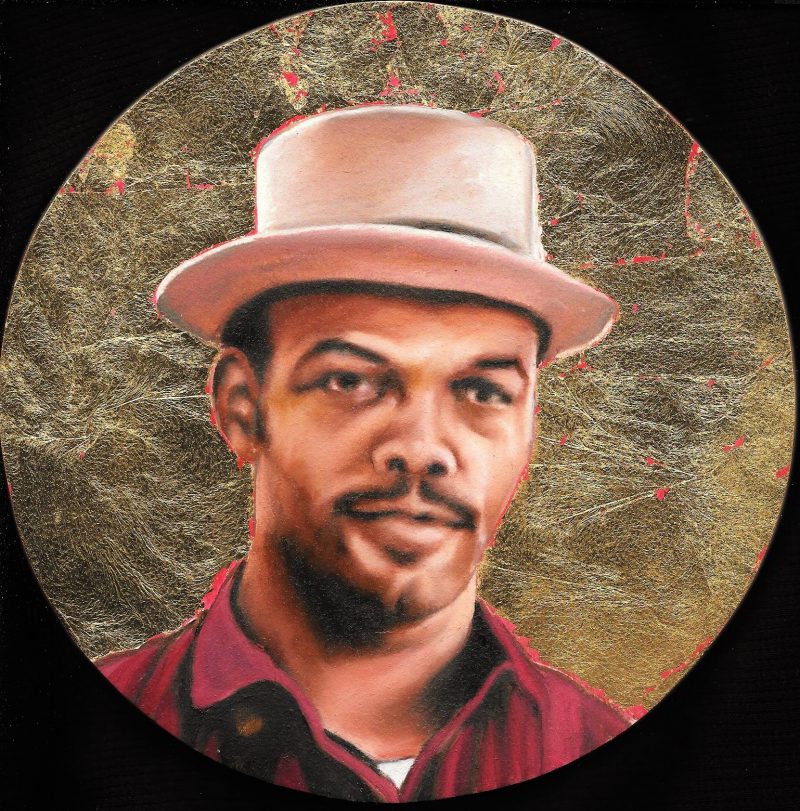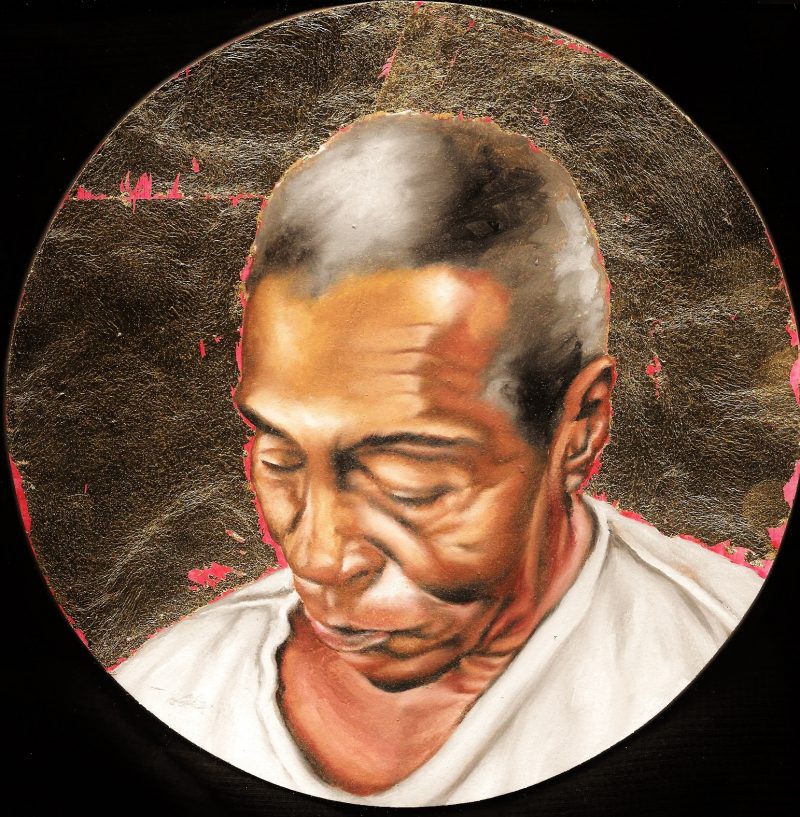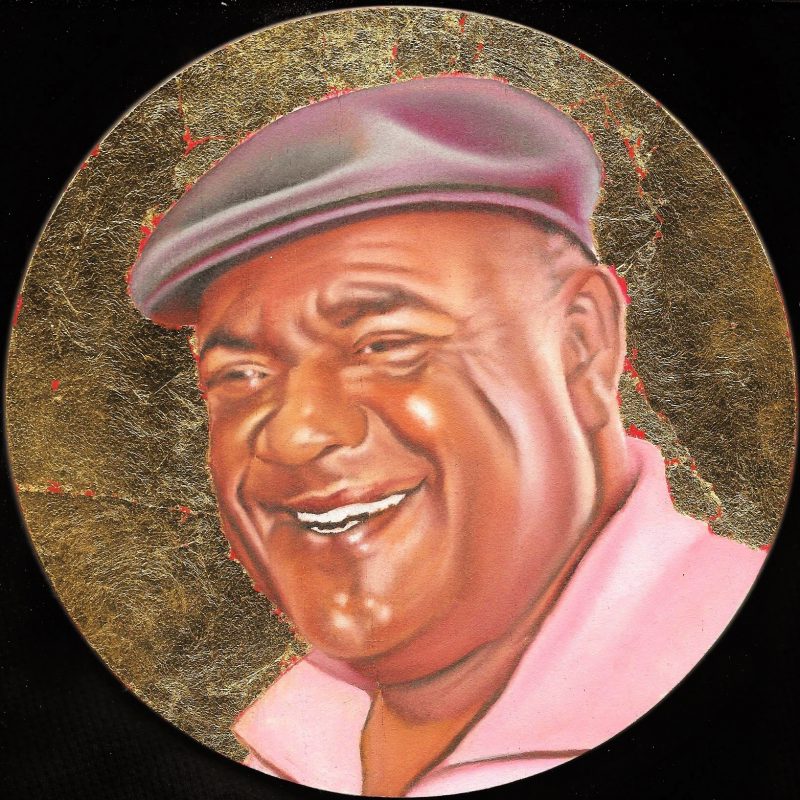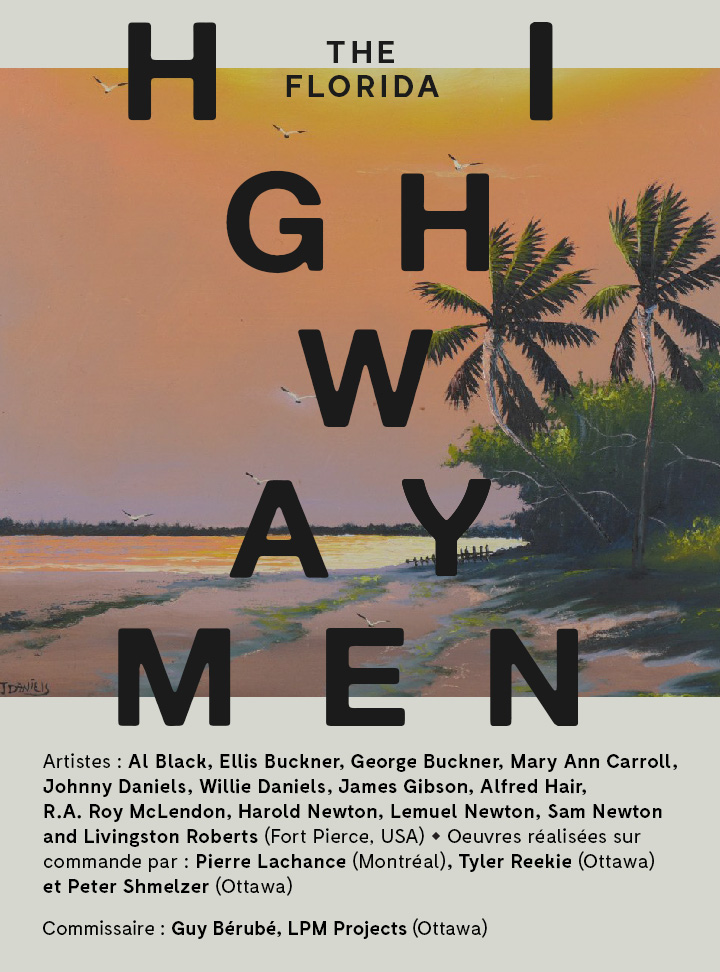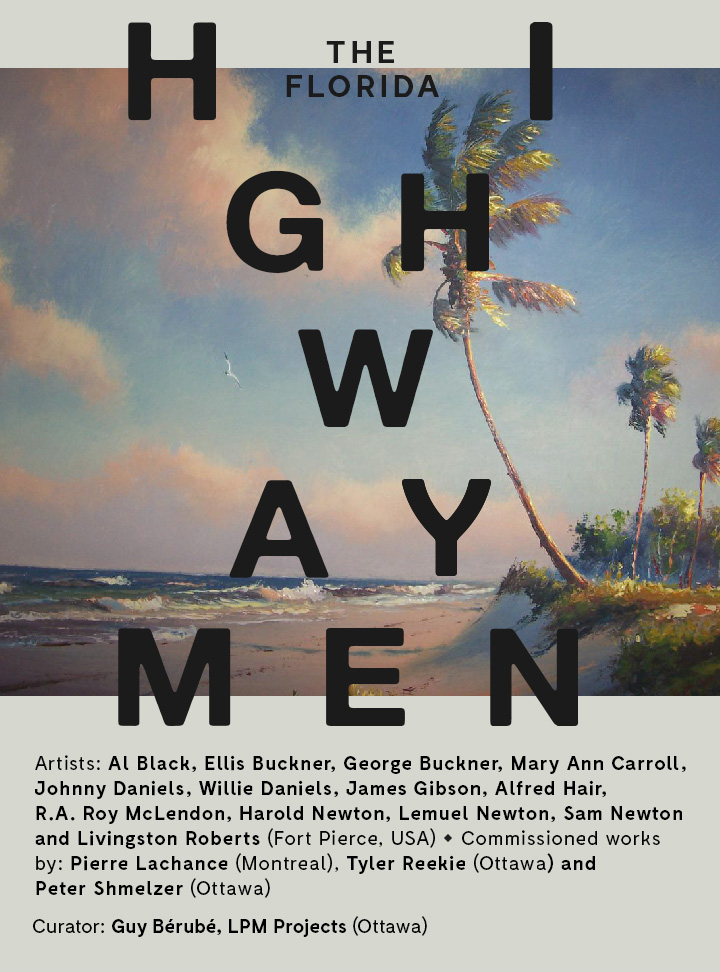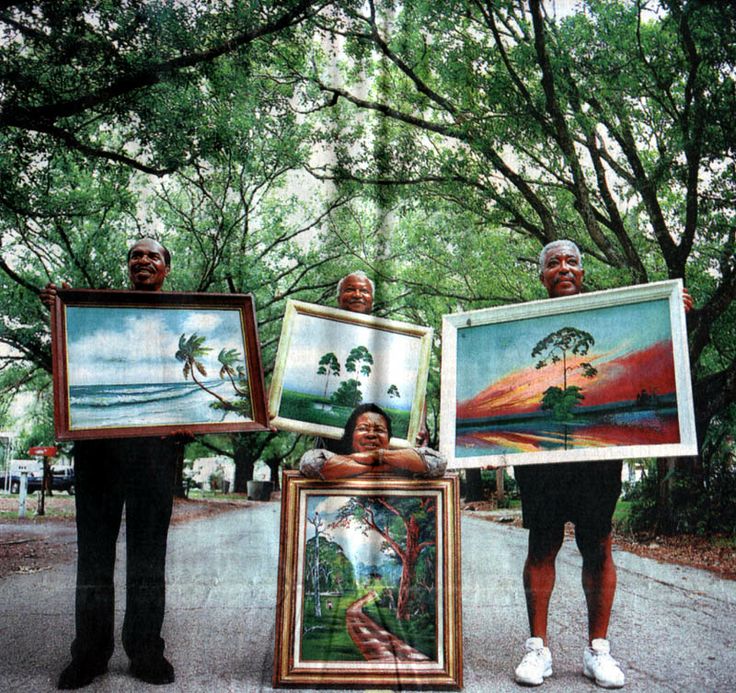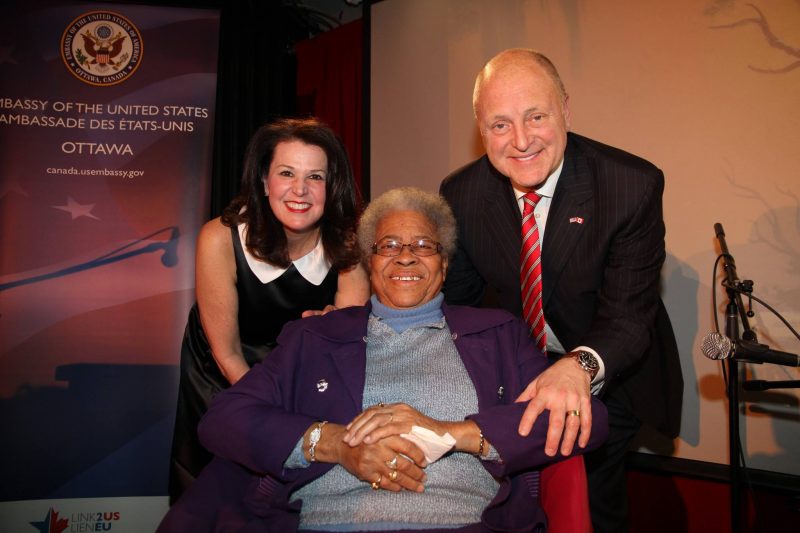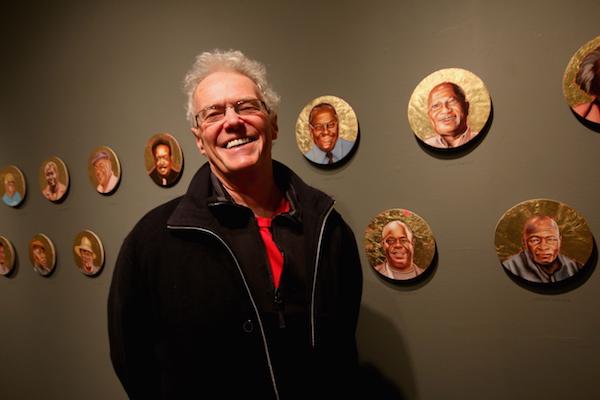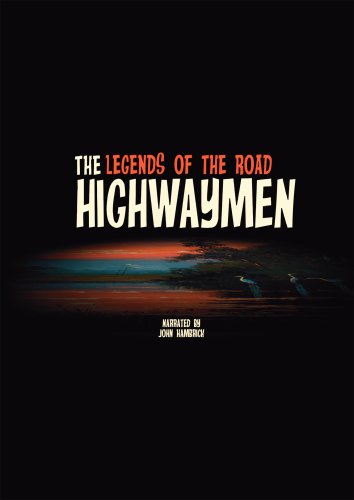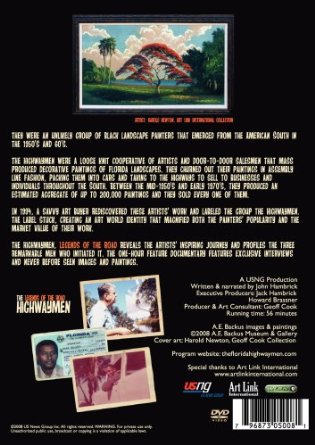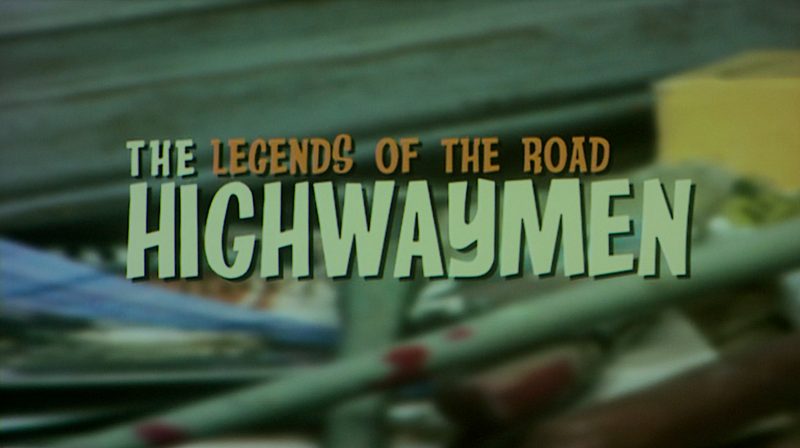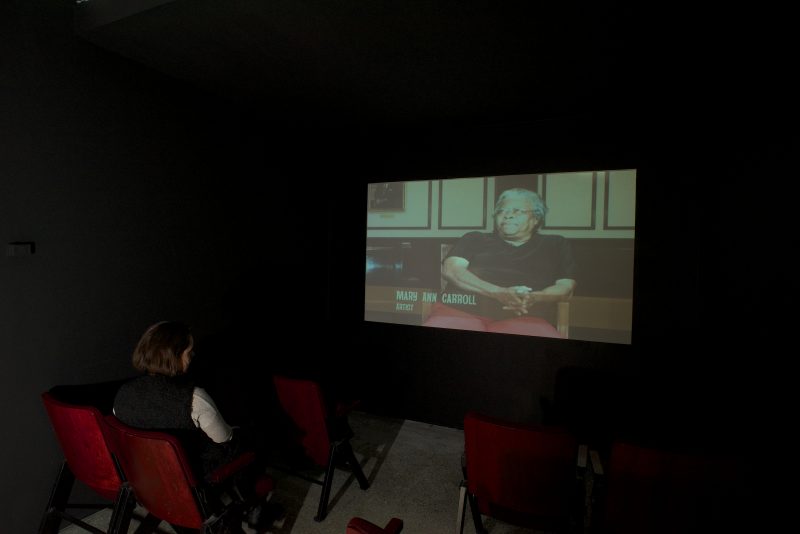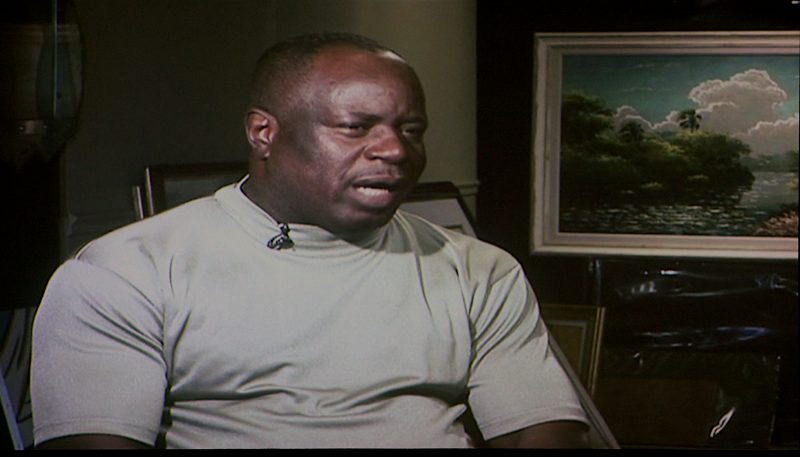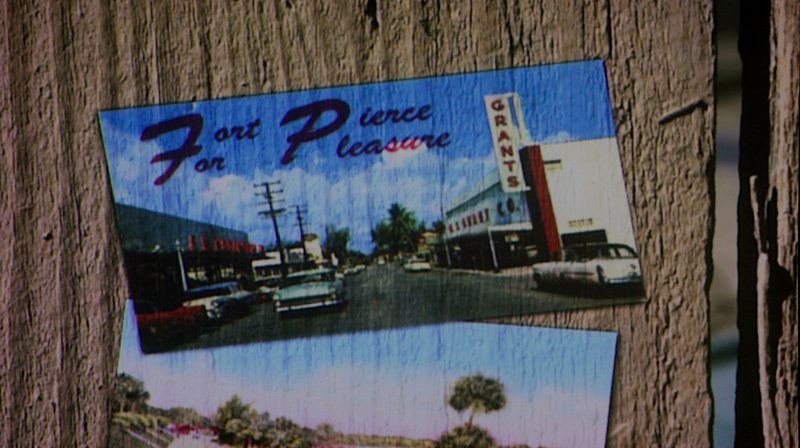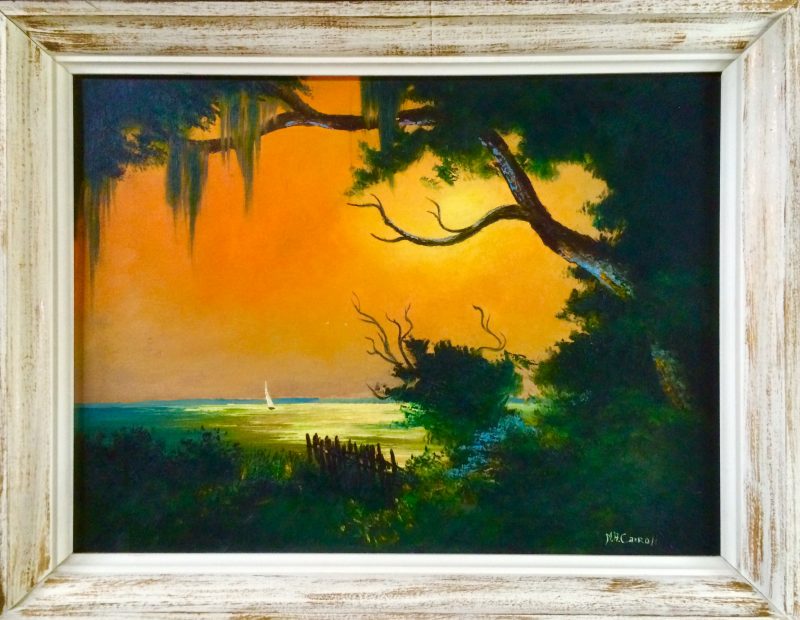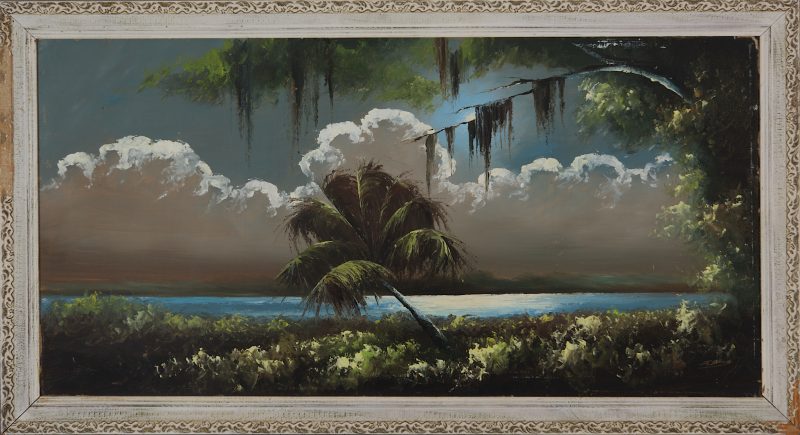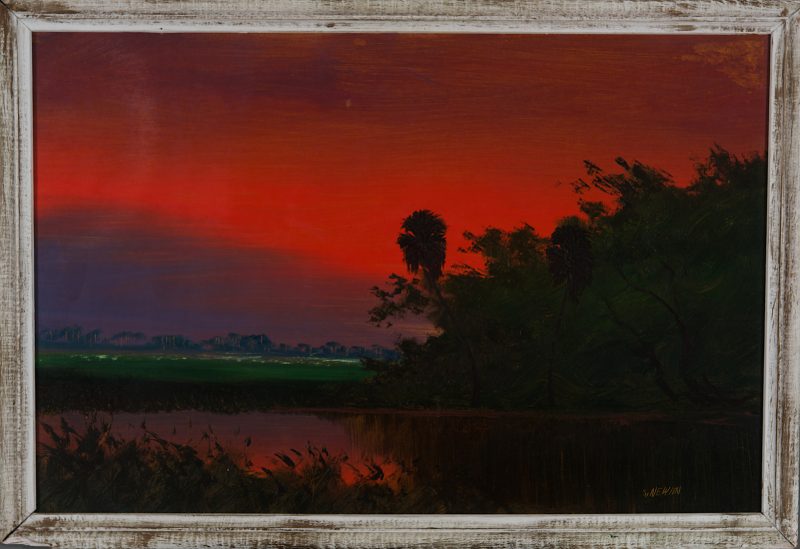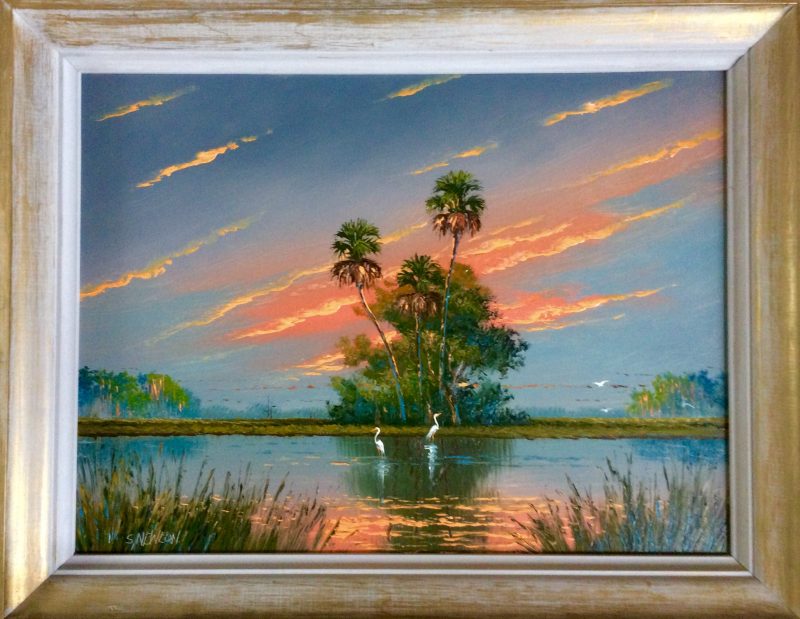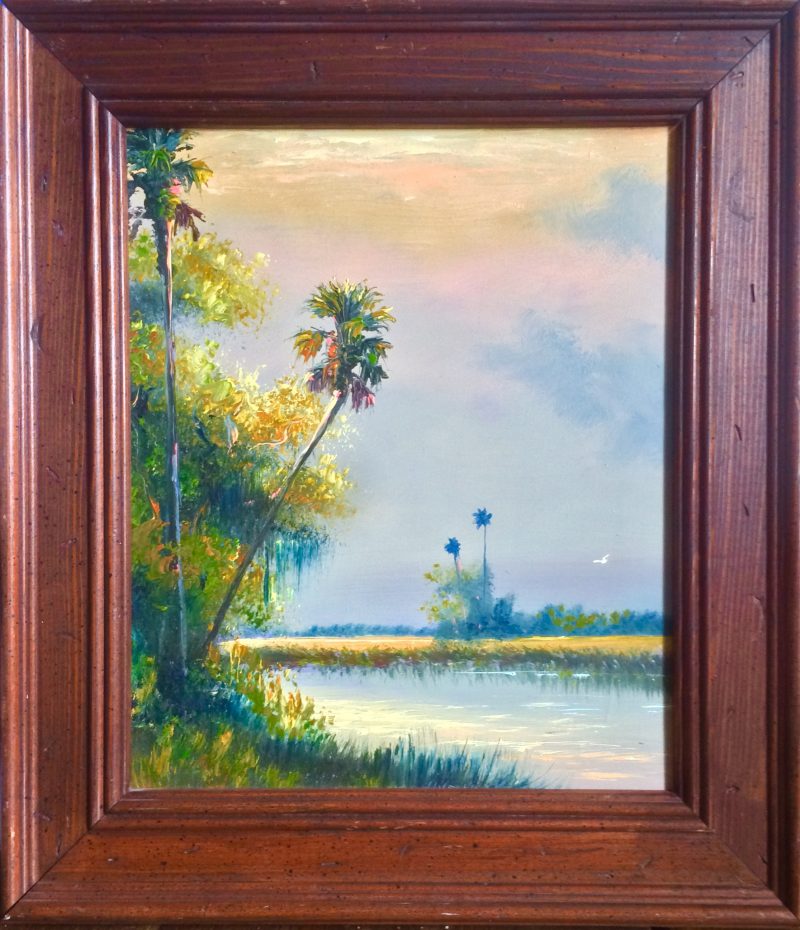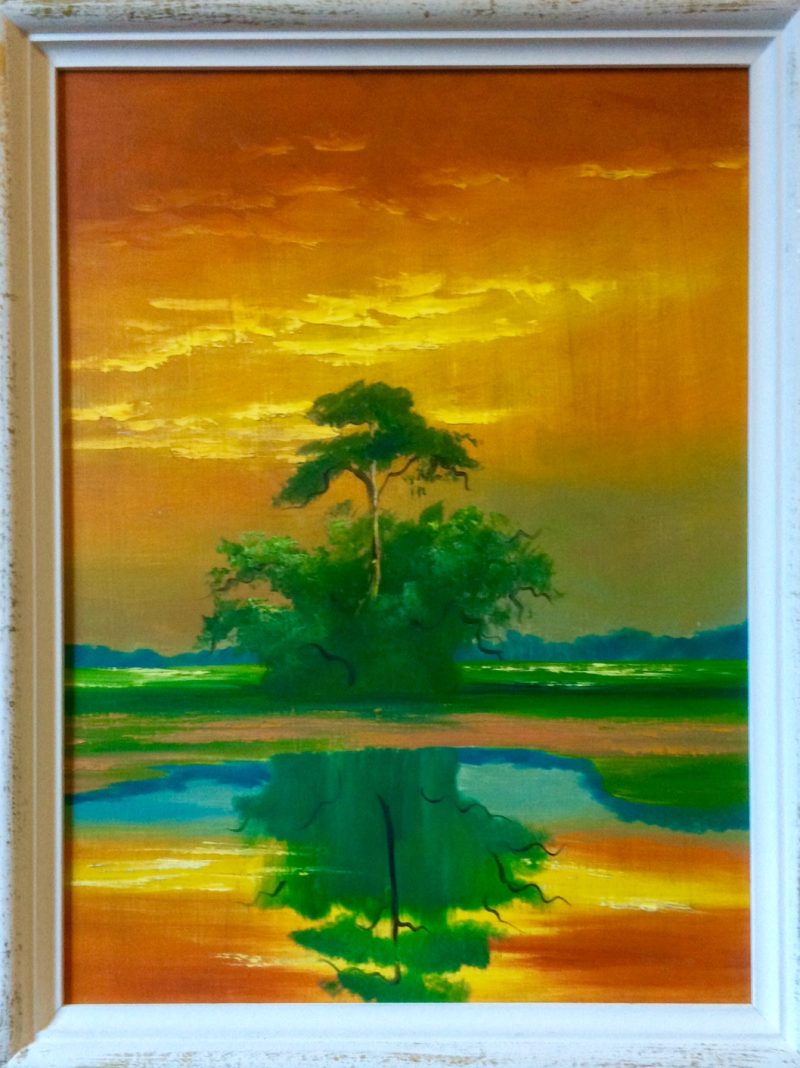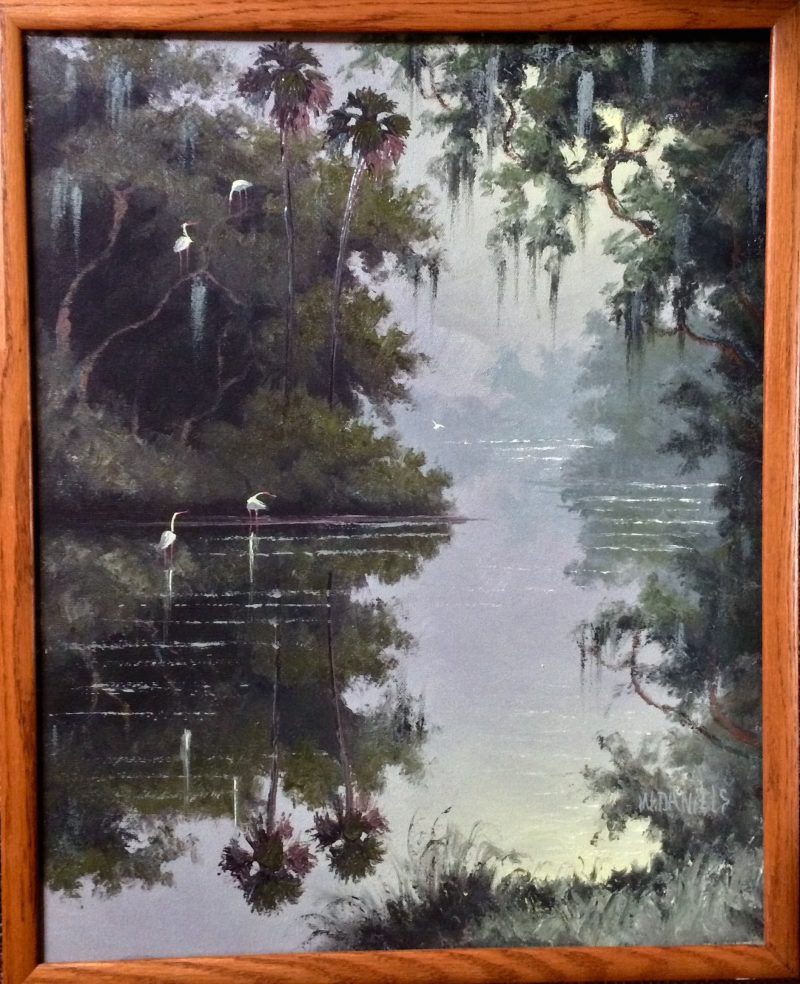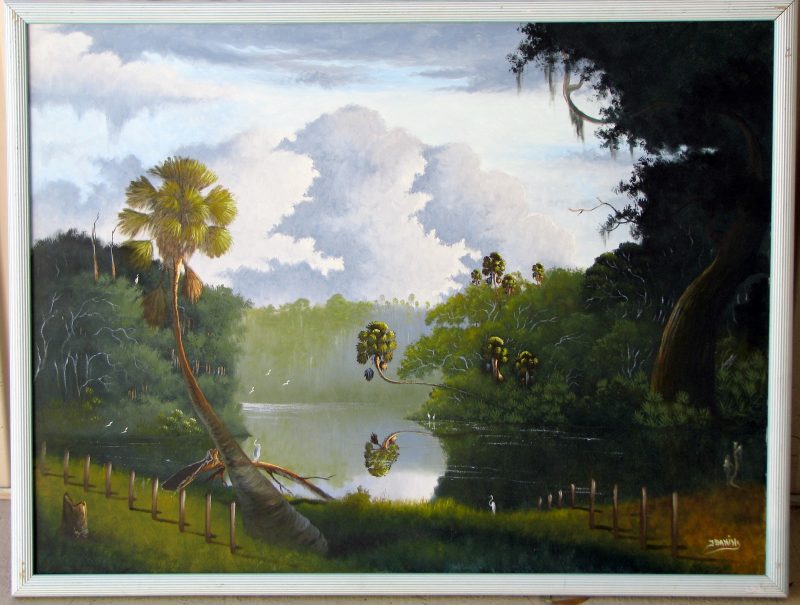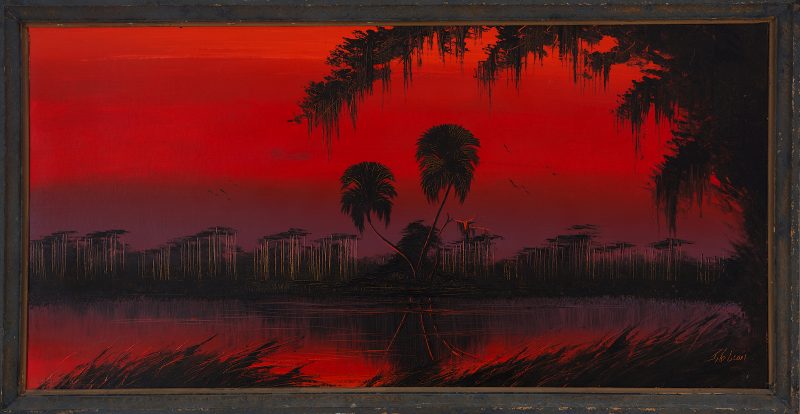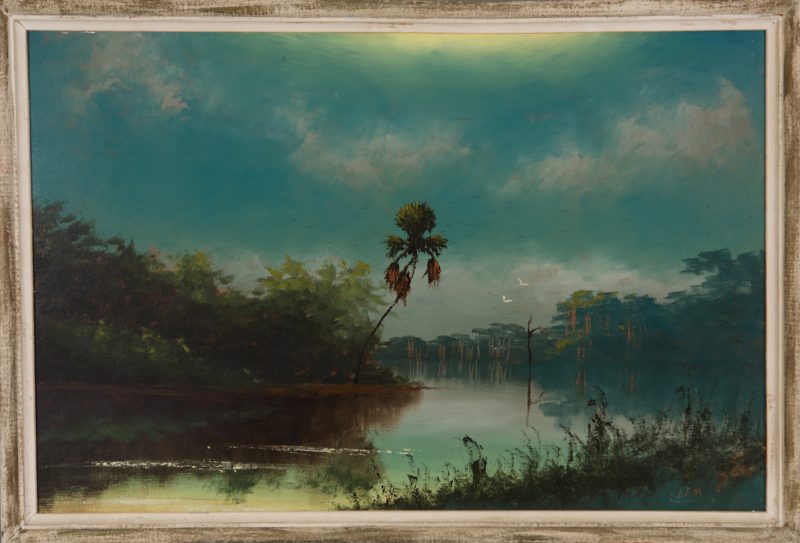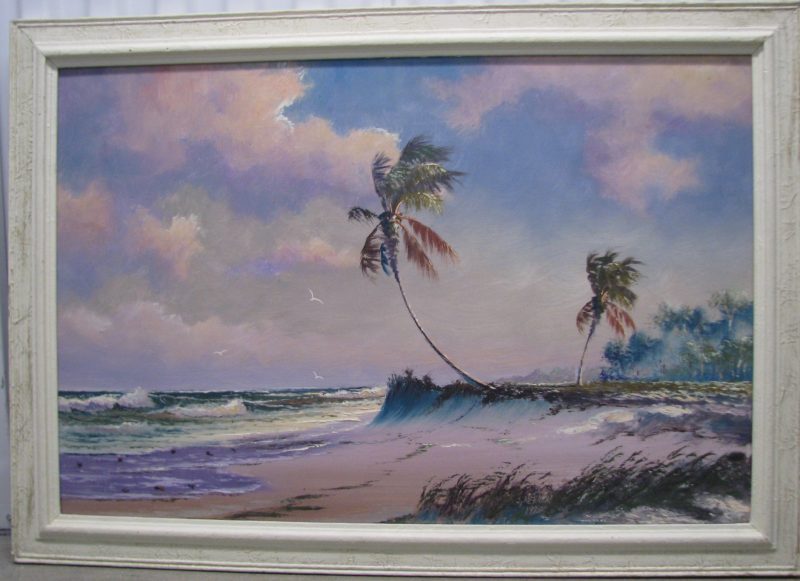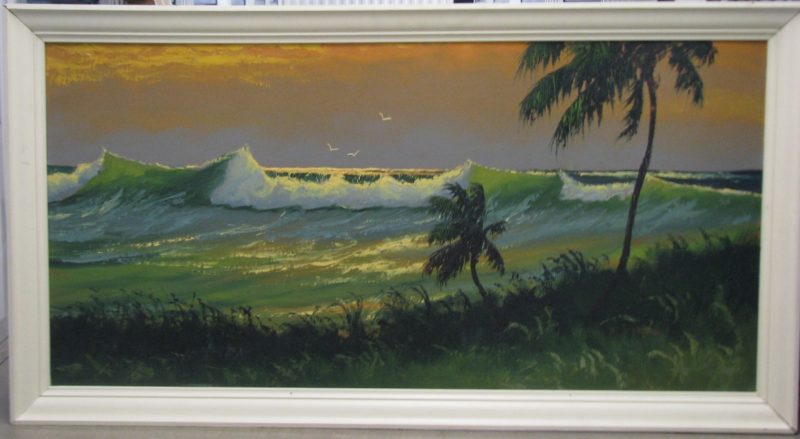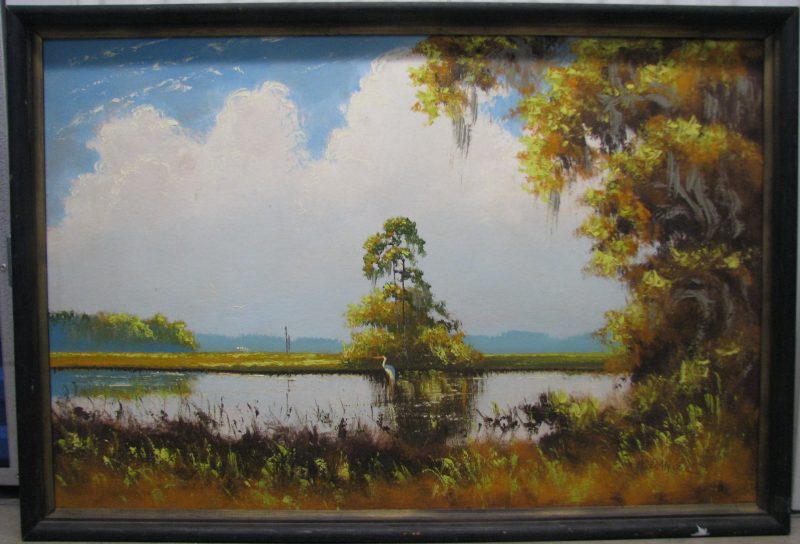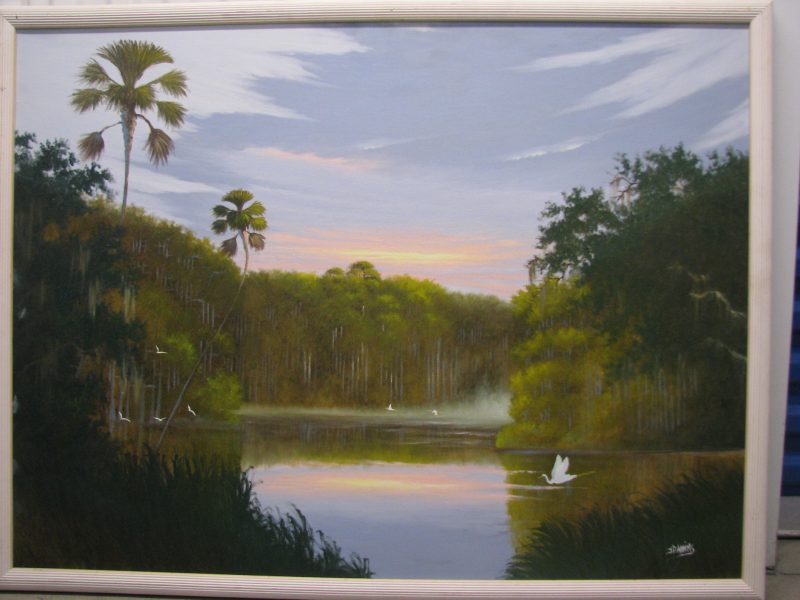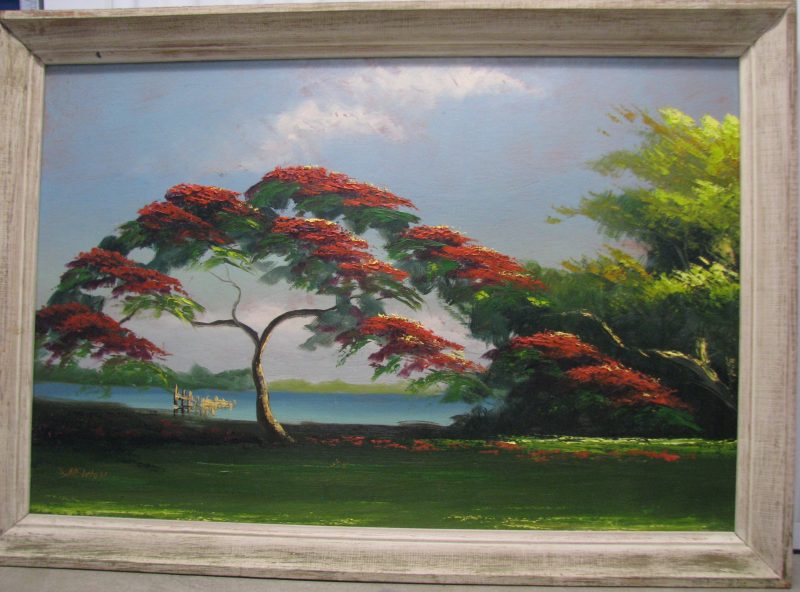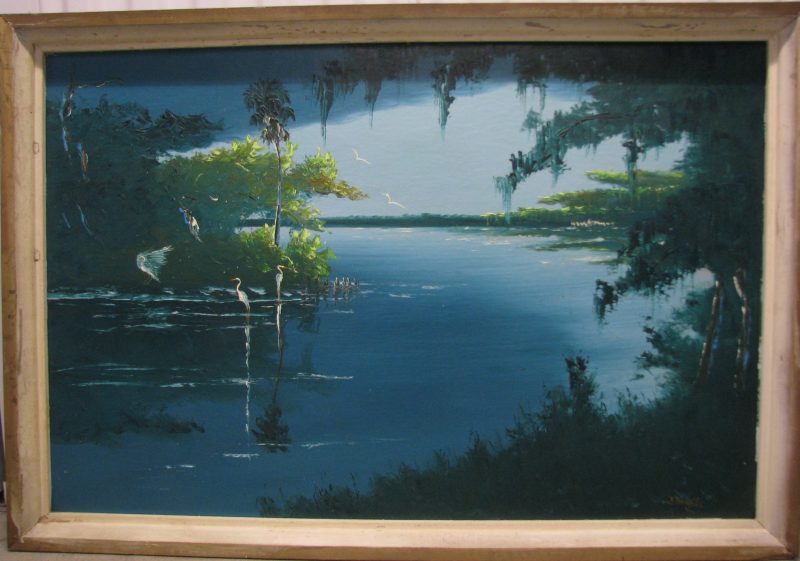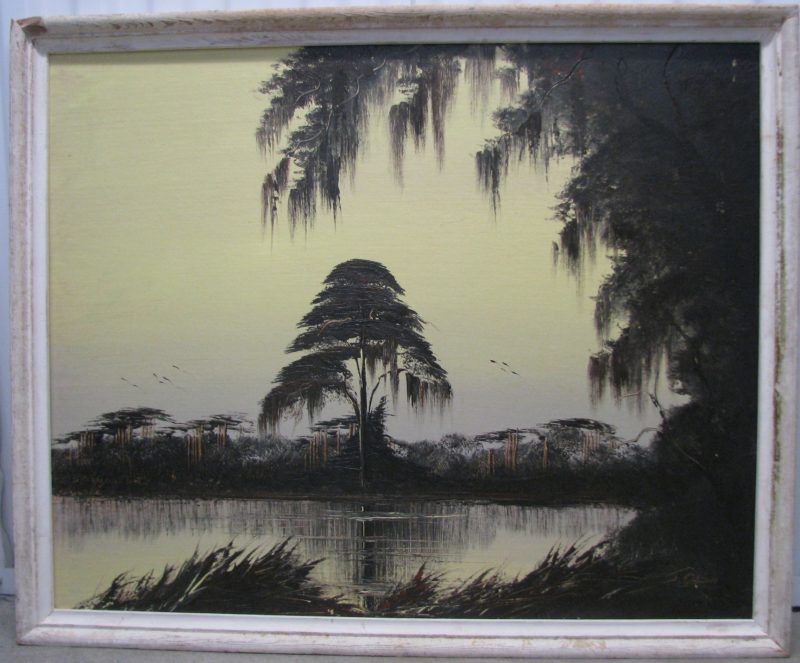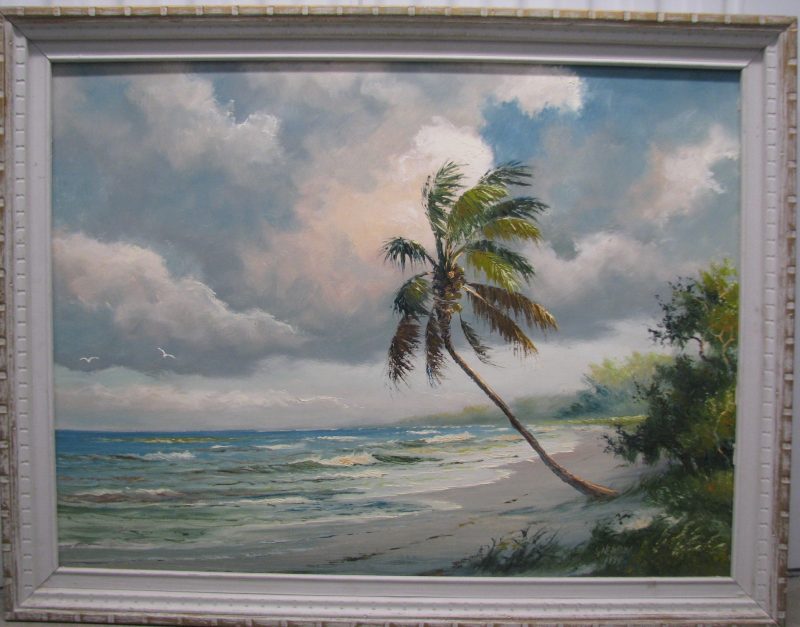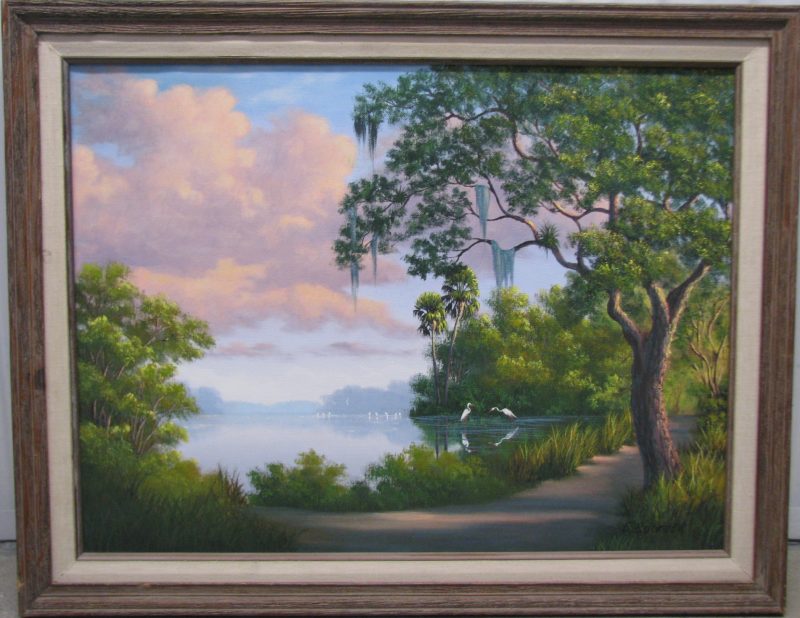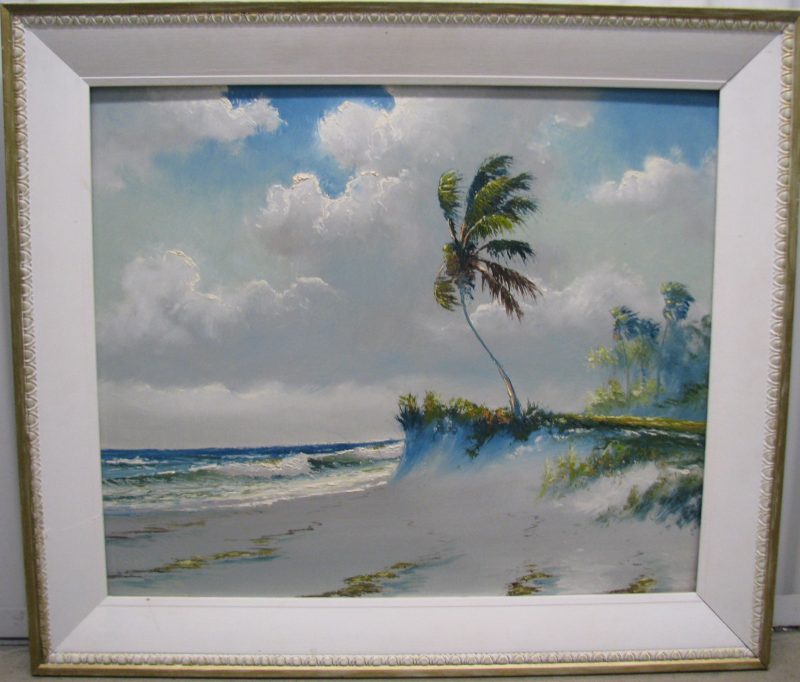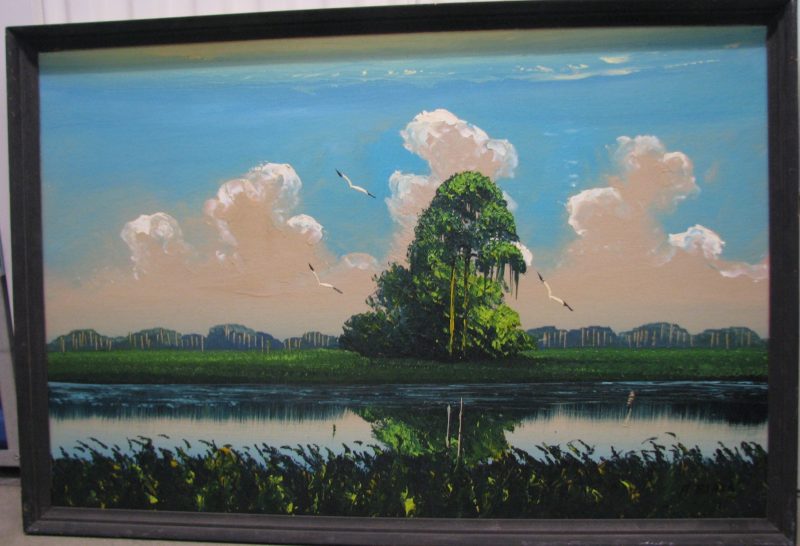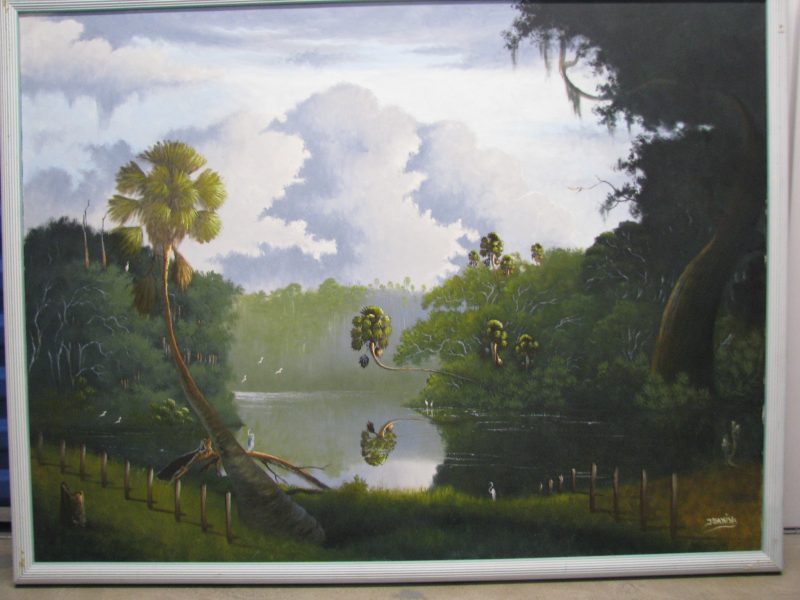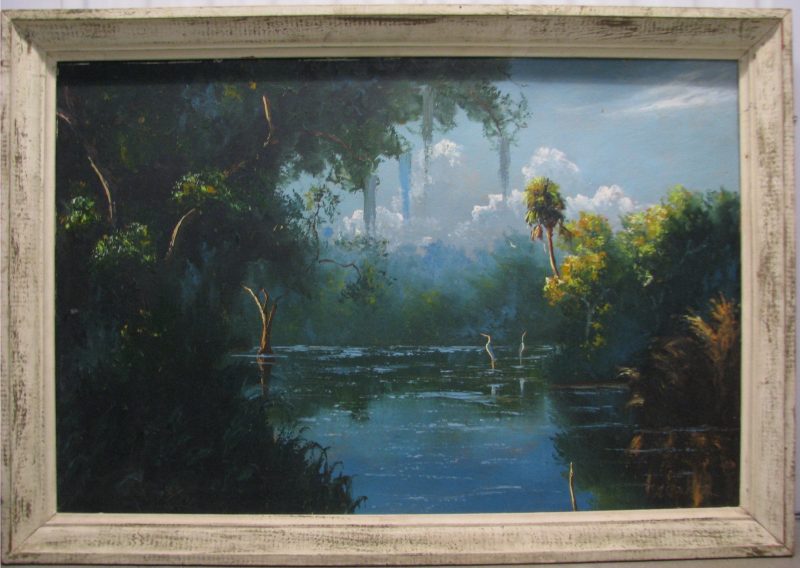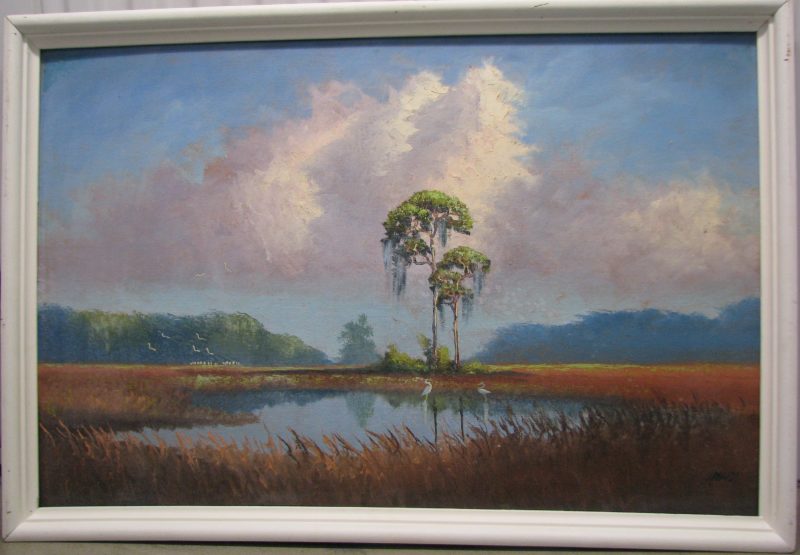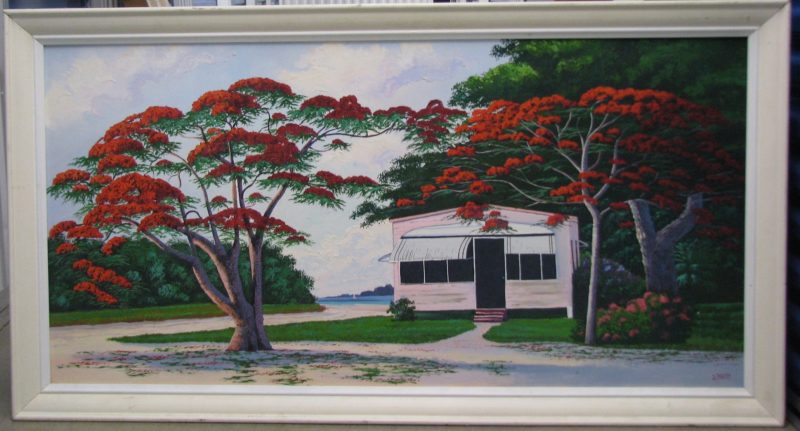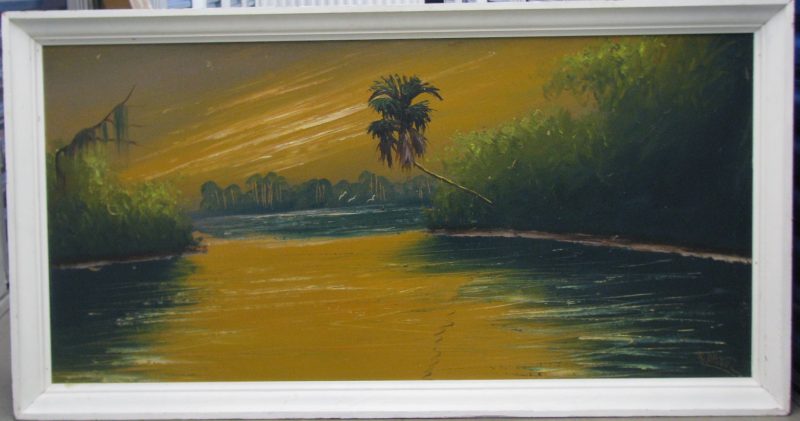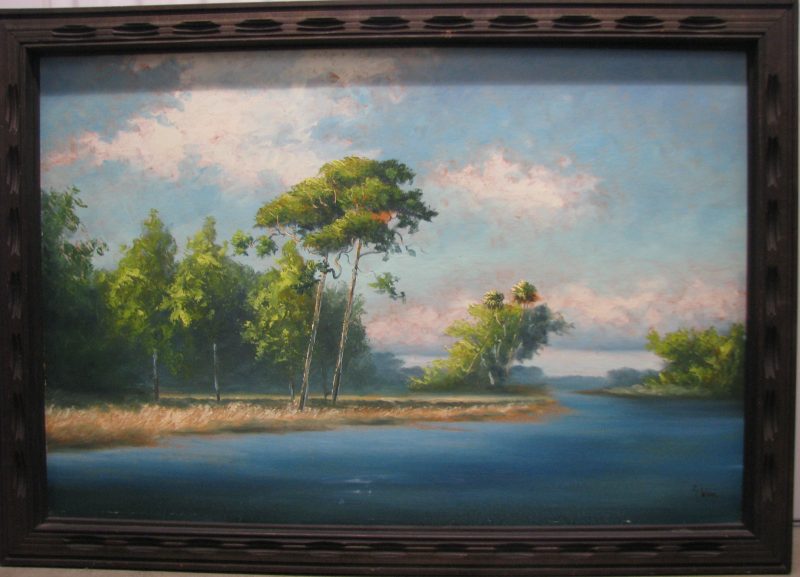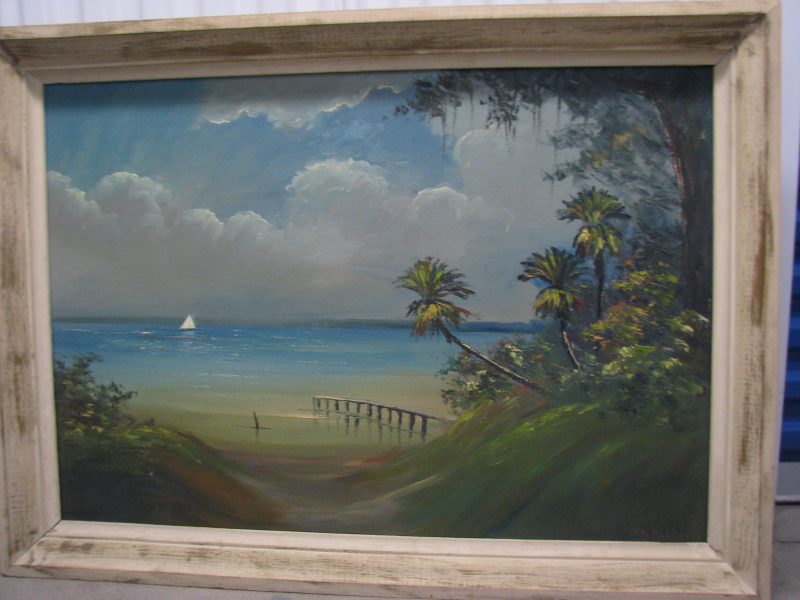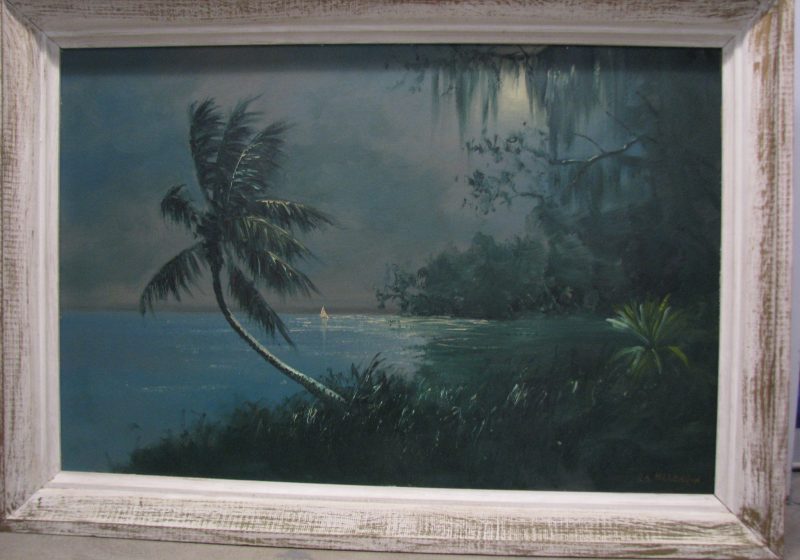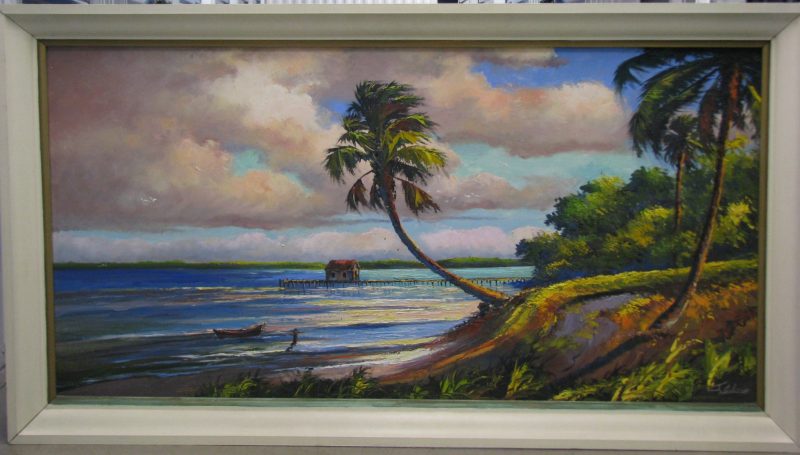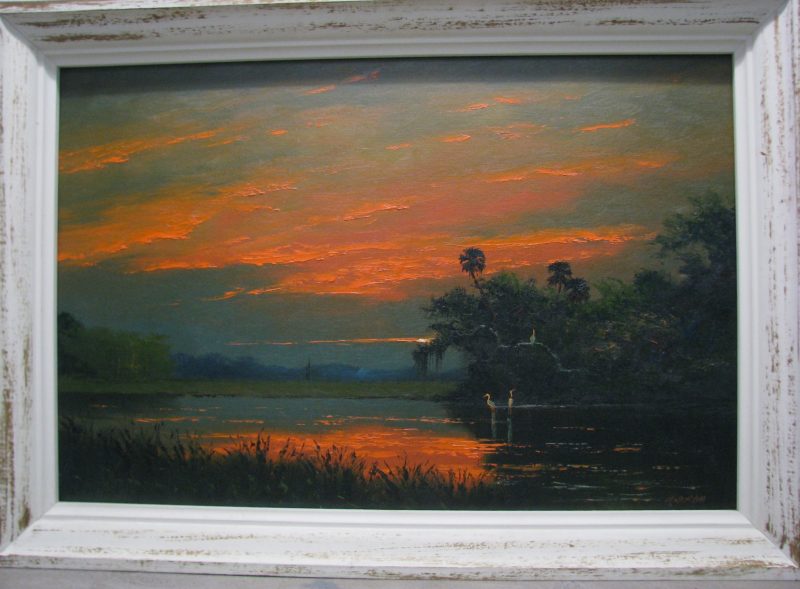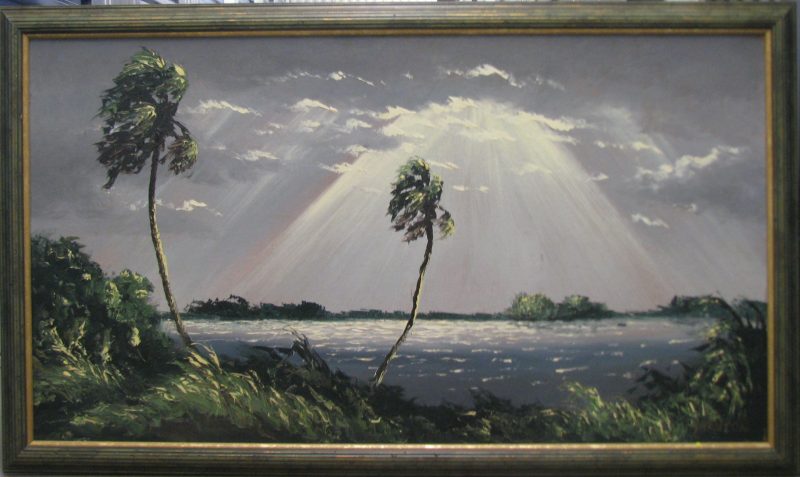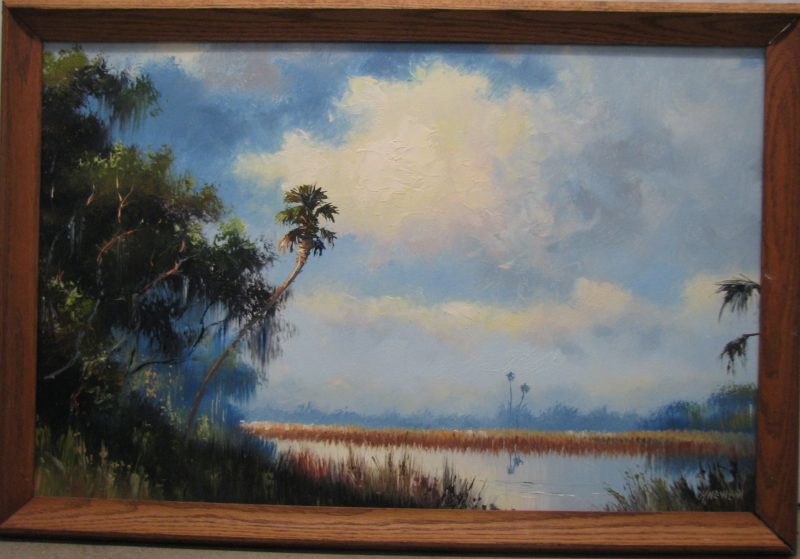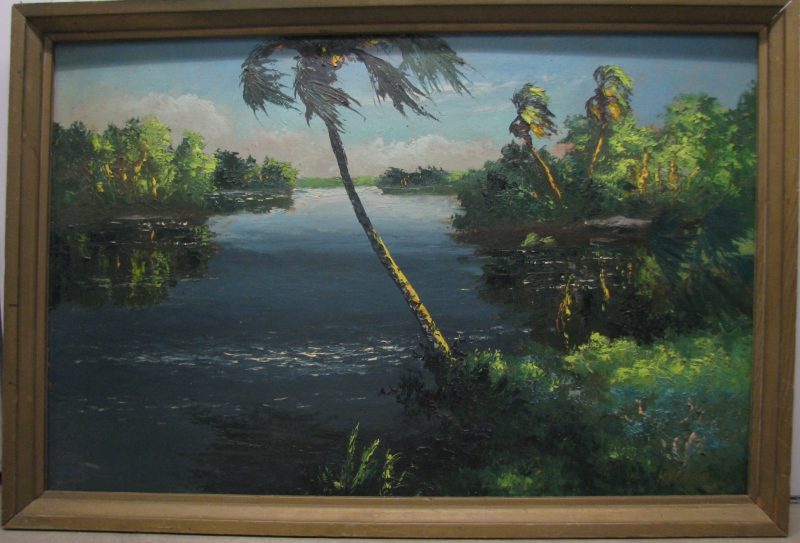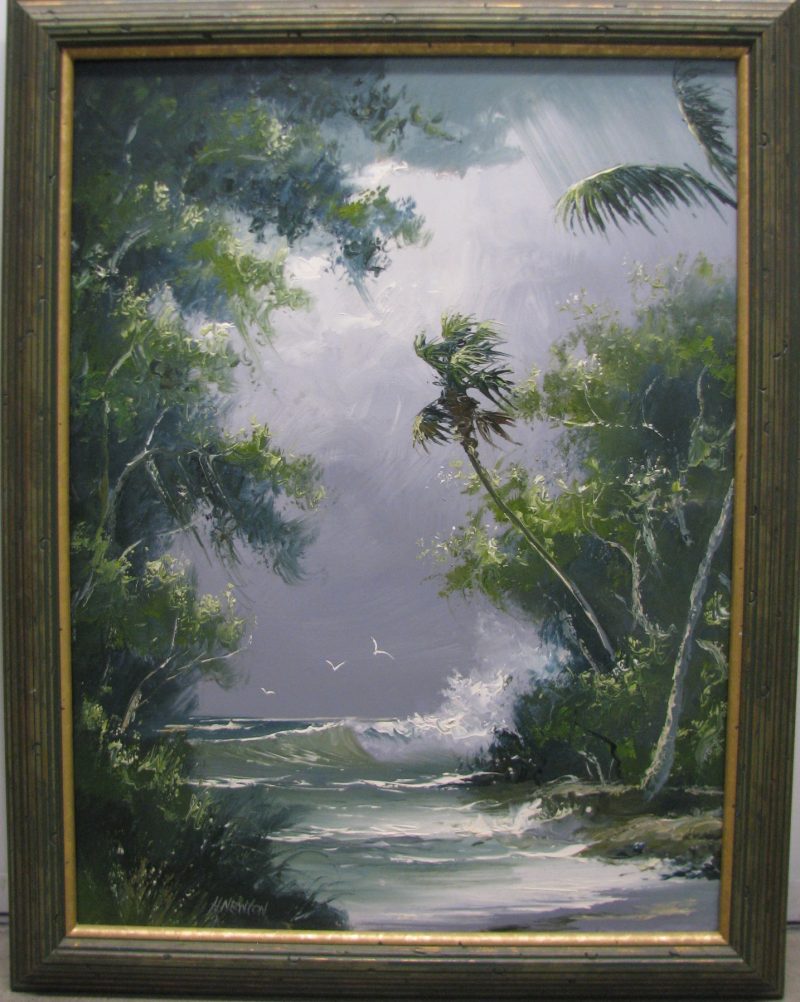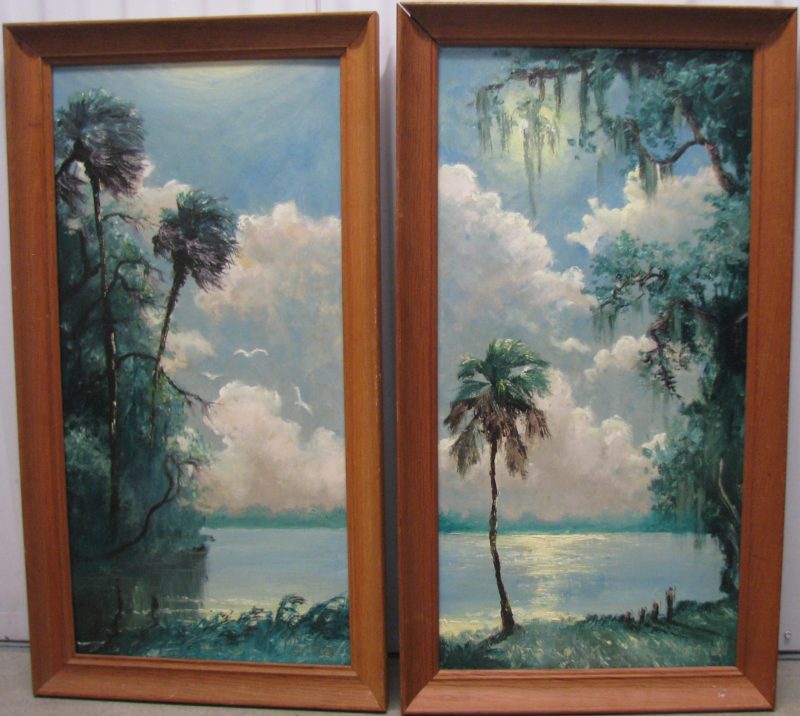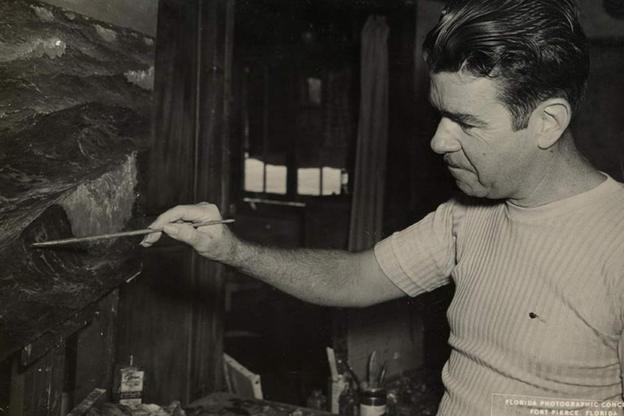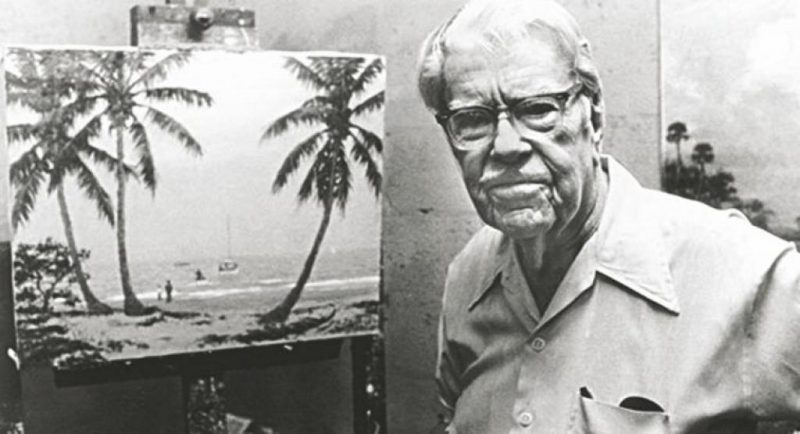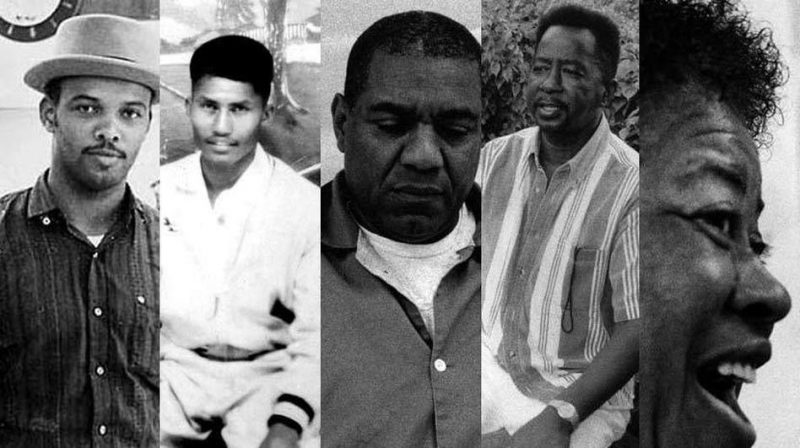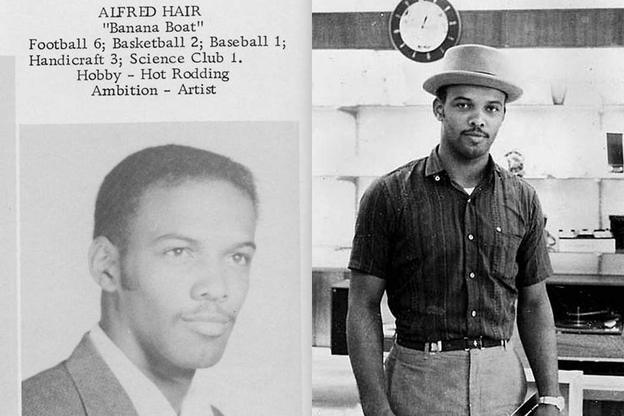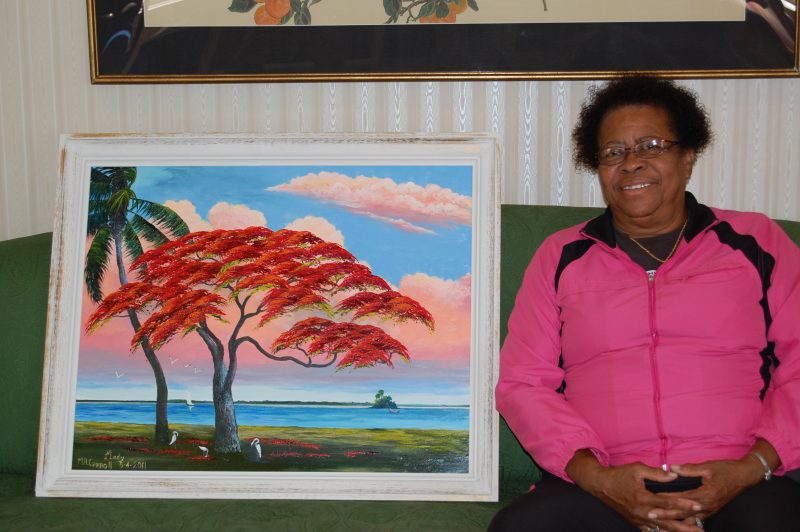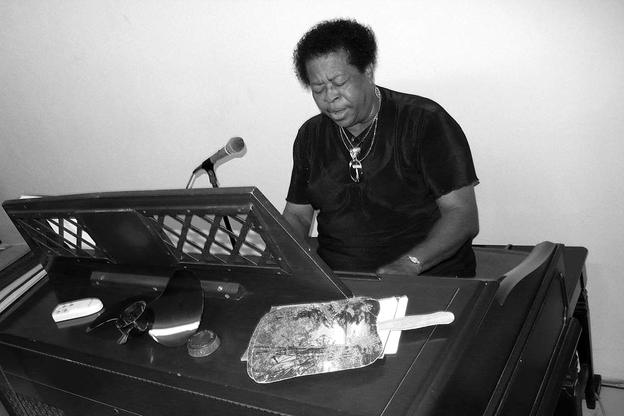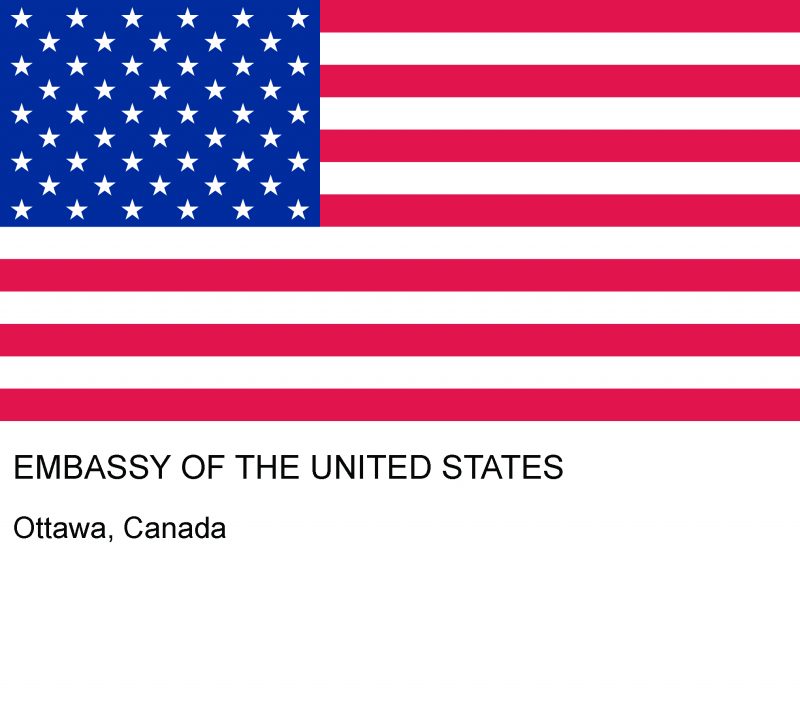Florida Highwaymen February 2016
The Embassy of the United States, Ottawa, presents:
THE FLORIDA HIGHWAYMEN
February 5 – 27, 2016
Du 5 au 29 février 2016
Exhibition presented by the Embassy of the United States, Ottawa, in collaboration with Galerie SAW Gallery
Exposition présentée par l’Ambassade des États-Unis, Ottawa, en collaboration avec la Galerie SAW Gallery
Artists / Artistes : Al Black, Ellis Buckner, George Buckner, Mary Ann Carroll, Johnny Daniels, Willie Daniels, James Gibson, Alfred Hair, R.A. Roy McLendon, Harold Newton, Lemuel Newton, Sam Newton + Livingston Roberts (Fort Pierce, USA)
Commissioned works by / Œuvres réalisées sur commande par : Pierre Lachance (Montréal), Tyler Reekie (Ottawa) + Peter Shmelzer (Ottawa)
Curator / Commissaire : Guy Bérubé (Ottawa)
Free admission to the exhibition and related events / Entrée libre à l’exposition et aux événements
Opening reception / Vernissage
Friday, February 5, 8PM–12AM / Le vendredi 5 février de 20 h à minuit
Music by / Musique avec le DJ Chris Jabbour (Ottawa)
http://floridahighwaymen.com/
Film screening / Projection de film
Thursday, February 18 at 8PM / Le jeudi 18 février à 20 h
FILM SCREENING
Thursday, February 18 at 8PM @ Galerie Saw Gallery.
The Highwaymen: Legends of the Road, Jack Hambrick (Fort Lauderdale, FL), 2008, 56 min., in English / en anglais
Special thanks to Tony Hayton for generously lending works from his collection for this exhibition and for his longtime dedication to preserving the Florida Highwaymen’s legacy
Nous tenons à remercier Tony Hayton d’avoir accepté généreusement de prêter des œuvres de sa collection pour cette exposition et de son dévouement envers la conservation du patrimoine des Florida Highwaymen.
“Art has an ability to soften difficult exchanges… exchanges in social, political and human difference. It fills the gaps between us and allows us to travel, work and coexist in the world harmoniously. As a whole we have great power for change and forward movement.”
—Nick Cave, artist (Chicago, USA), in response to this exhibition.
“Beauty is in the eye of the beholder. I guess there’s a lot of beholders”. – Mary Ann Carroll, Florida Highwaymen Artist.
“FORT PIERCE, Fla. — Wind-bent palm trees, sand, surf, billowing clouds and vivid sunsets were the essentials of Florida landscape painting that emerged following World War II. Occasionally moss-draped cypress trees in the still water of a marsh presented a more contemplative view, while a royal poinciana in full, flaming red bloom or a storm-tossed shore provided dramatic relief”. – The New York Times, 2001.
The Florida Highwaymen is a group of 26 African-American landscape painters that formed during the 1950s in Fort Pierce, Florida. Their careers took shape during a time and in a place where pursuing a career as an artist presented an alternative to working in citrus groves and labour camps. Denied access to private galleries due to segregation, the Highwaymen made a living selling their work door to door and from their cars along Florida’s eastern coastal roads A1A and US 1. Collectively, their work stands at the crossroads of innovation, entrepreneurship and personal-political resilience.
Despite the striking originality of their work, the Highwaymen are often denied entry into the traditional canon of Western art history. This major group exhibition addresses the problem of visibility by highlighting their distinctive artistic approach in relation to the social, cultural and political context in which it first emerged. Each of the 30 works in this exhibition has been generously provided by Tony Hayton, an Ottawa-based Canadian collector who was introduced to the Highwaymen in 2000 and has supported their work ever since. Although this project remains the largest of its kind, as well as the first to be presented in Canada, the works on view make up only a small fraction of the group’s total output, which is estimated to be anywhere from 250,000 to 400,000 paintings over a 60-year period.
Working under A.E. “Beanie” Backus, a celebrated white artist considered to be the preeminent Floridian landscape artist of the 20th century, Highwaymen artist Alfred Hair developed a distinctive speed-painting technique that became characteristic of the movement as a whole. The Highwaymen completed landscape scenes in an hour or less, often selling paintings before they had completely dried. The artists painted with oil paints directly onto Upson board, a drywall substitute made of ground wood and recycled paper products. Before the company ended operations in 1984, Upson board was readily available through building supply stores, where it was sold in four-by-eight–foot sheets and cut down by the artists to the appropriate size for immediate use. Upon completion, the artist placed each painting into handmade frames made of crown moulding used to frame windows and doors and available at building supply stores. The frames were often painted white and brushed lightly with gold varnish to imbue the whole object with an elevated degree of quality and class. This decision to work exclusively with commonplace, unrefined materials provided a faster and cheaper alternative to the academically fashionable approach that favours the use of stretched canvas.
Comparisons may be drawn between the Highwaymen and other artist groups that worked within the tradition of landscape painting. The most striking parallels can be made with the Hudson River School, a group of American artists active throughout the mid-19th century who painted sublime landscapes of the Hudson River Valley and surrounding areas; and the Group of Seven, a group of Canadian artists active throughout the early 20th century who painted rural Canadian landscapes in search of a national artistic identity. The Hudson River School, the Group of Seven and the Florida Highwaymen can be positioned within the pastoral genre, a form of literature, art and music that depicts the natural world in an idealized, harmonious manner. Still, we must be careful to note that the apparent social disinterestedness of pastoral art is often used to advance certain political ideals. If the romantic pastoralism of the Hudson River School and the Group of Seven erases any trace of human activity, mystifies labour and excises the politics of settlement culture , the art of the Highwaymen can be characterized as a form of complex pastoralism, as it contains a materialist counterforce that undermines or disagrees with the classical pastoral ideal from within. In the Highwaymen’s work, the inseparability of the painting’s subject matter from the poverty of materials used to execute the image problematizes the idea of a leisurely, effortless existence between man and environment. The raw materiality of the object evidences the harsh economic reality that lies beneath the surface of the picturesque image.
In addition, it is crucial to consider the Highwaymen’s remarkable use of colour, which can be read as a form of escapism from the melancholic cultural landscape that defined the Jim Crow (segregated) South. By introducing this vibrant palette, the artists fashioned an entirely new mode of landscape painting, one with an irreducible and necessary social consciousness. The seemingly neutral image of the empty coastal landscape is granted a spectacular, almost extraterrestrial quality; each work becomes an emblem of longing, pointing to a fictional harmonious place that exceeds the here and now. The Highwaymen simultaneously looked toward and beyond nature to imagine a new American life.
This collection of paintings captures the possibility of achieving self-determination through creative expression. Sponsored by the Embassy of the United States, Ottawa, this exhibition intentionally coincides with Black History Month as a means to recall the artistic legacy of the Highwaymen through the complex histories of race relations in both the United States and Canada. We figure their work as a reflective lens from which to view the past in the present, highlighting the progress that has been made since the group’s formation as well as the challenges that remain today.
— Adam Barbu (Toronto)
CURRENT PRESS: February 2016.
The Movie (in the making): The Highwaymen – a Stars North film
CBC Canada:
http://www.cbc.ca/beta/news/canada/ottawa/florida-highwaymen-art-saw-gallery-mary-ann-carroll-1.3432626
Le Droit / Gatineau-Ottawa:
http://www.lapresse.ca/le-droit/arts-et-spectacles/arts-visuels/201602/03/01-4946908-coup-doeil-sur-les-paysagistes-afro-americains.php
La Presse / Montreal:
http://www.pressreader.com/canada/la-presse/20160206/281964606759399/TextView
Ottawa Citizen:
Amazing art story: The Florida Highwaymen (and woman)
CBC Canada:
http://www.cbc.ca/player/play/2683086332
(44 minutes and 15 seconds into clip).
Ottawa Magazine:
http://ottawamagazine.com (search ‘Florida Highwaymen’)
Ottawa CTV News:
http://ottawa.ctvnews.ca/video?clipId=802416&binId=1.1164511&playlistPageNum=1
CHUO Radio / Ottawa Unviversity:
http://stream.chuo.fm/2501/2/20160210/17_00/play
CKCU Radio / Carleton University:
http://cod.ckcufm.com/programs/100/25797.html.
Black Ottawa Scene:
US Embassy hosts “Florida Highwaymen” exhibit at the SAW Gallery
Apt613 / Ottawa Art Blog:
Opening night, courtesy of the US Embassy of Ottawa:
Canadian Art Magazine
MONTREAL PRESS: May 2016
La Presse:
http://www.lapresse.ca/arts/arts-visuels/201605/07/01-4979183-lhistoire-de-peintres-afro-americains-de-floride-ravivee-a-montreal.php
Montreal Gazette:
Ottawa artist pays tribute to Florida Highwaymen at Griffintown gallery
The Nikki Clarke Show, May 4, 2016:
CTV News:
http://www.ctvnews.ca/lifestyle/art-by-florida-highwaymen-on-display-in-montreal-through-may-29-1.2892405
Global News:
Ottawa artist pays tribute to Florida Highwaymen at Griffintown gallery
Yahoo News:
https://ca.news.yahoo.com/art-florida-highwaymen-display-montreal-may-29-110008156.html
Vancouver Sun:
http://www.vancouversun.com/Florida+Highwaymen+display+Montreal+through/11904290/story.html
PAST PRESS:
New York Times: 2001
Los Angeles Times: 2005
http://articles.latimes.com/2005/apr/27/nation/na-highwaymen27
New York Times: 2015
Tampa Bay Times: 2006:
http://www.sptimes.com/2006/07/19/Neighborhoodtimes/She_s_a_painter__past.shtml
Tampa Bay Times: 2005:
http://www.sptimes.com/2005/08/20/Northpinellas/Painting_isn_t_just_o.shtml
Scripps Howard Foundation Wire:
–FRENCH:
L’art a la capacité d’atténuer les échanges difficiles… les échanges sur les différences sociales, politiques et humaines. Il comble la distance qui existe entre nous et nous permet de voyager, de travailler et de coexister harmonieusement dans le monde. Ensemble, nous disposons d’une grande force pour changer et avancer.
Nick Cave, artiste (Chicago, É.-U.), en réponse à cette exposition
Formé dans les années 1950 à Fort Pierce, en Floride, le groupe des Florida Highwaymen se composait de vingt-six peintres paysagistes afro-américains. Ils furent actifs à une époque et à un endroit où la poursuite d’une carrière en arts représentait une alternative aux agrumeraies et aux camps de travail. Ne pouvant accéder aux galeries privées en raison de la ségrégation raciale, les Highwaymen vendaient leurs œuvres en faisant du porte-à-porte et à partir de leurs voitures sur les routes de l’est de la Floride, soit la A1A et la US1. Ensemble, leurs œuvres se situent à la croisée de l’innovation, de l’entrepreneuriat, de la résilience politique et personnelle.
Malgré l’originalité frappante de leur art, les Highwaymen se sont souvent vus interdire l’entrée dans le canon traditionnel de l’histoire de l’art occidental. Cette exposition collective d’importance aborde le problème de la visibilité en soulignant la singularité de leur approche artistique en lien avec le contexte social, culturel et politique qui l’a vue naître. Les trente œuvres qui font partie de la présente exposition ont été généreusement rendues disponibles par Tony Hayton, un collectionneur canadien établi à Ottawa qui a découvert les Highwaymen en 2000 et qui, depuis, soutient leurs œuvres. Bien que ce projet soit le plus ambitieux en son genre et même le premier à être offert au Canada, les œuvres présentées ne représentent qu’une petite fraction de la production totale du groupe, laquelle est estimée entre 250 000 et 400 000 peintures sur une période de 60 ans.
Travaillant auprès de A. E. « Beanie » Backus, un artiste blanc de renom considéré comme la figure prééminente du mouvement paysagiste en Floride, l’artiste Highwaymen Alfred Hair a élaboré une technique singulière de peinture rapide qui est devenue emblématique du mouvement dans son ensemble. Les Highwaymen réalisaient des paysages en une heure et moins, vendant souvent leurs tableaux avant qu’ils n’aient complètement séché. Les artistes peignaient à l’huile directement sur des panneaux de fibres Upson, un substitut aux plaques de plâtre fabriqué à partir de pâte mécanique et de papier recyclé. Avant que la compagnie ne mette fin à ses opérations en 1984, le panneau Upson se trouvait facilement dans les commerces de matériaux de construction où il était vendu par feuilles de 1,2 par 2,4 mètres (4 par 8 pieds) que les artistes coupaient au format désiré pour leur usage immédiat. Une fois la peinture achevée, l’artiste mettait chaque œuvre dans un cadre fabriqué à la main à partir de moulures couronnées traditionnellement utilisées pour les fenêtres et les portes. Les cadres étaient souvent peints en blanc et brossés légèrement à l’aide d’un vernis doré pour conférer à l’objet un degré supérieur de qualité et de classe. Cette décision de ne travailler qu’avec des matériaux ordinaires, non raffinés, s’avérait une option plus rapide et moins dispendieuse que l’approche alors en vogue dans le milieu académique qui privilégiait l’utilisation d’une toile tendue.
On pourrait établir des comparaisons entre les Highwaymen et d’autres groupes d’artistes qui ont travaillé dans la tradition de la peinture paysagiste. Les parallèles les plus marquants demeurent ceux avec la Hudson River School, un groupe d’artistes américains actifs à la fin du 19e siècle qui ont réalisé des paysages sublimes de la vallée de l’Hudson et de ses environs; et le Groupe des Sept, un groupe d’artistes canadiens qui, au début du 20e siècle, ont peint des paysages ruraux du Canada dans leur quête d’une identité artistique nationale. La Hudson River School, le Groupe des Sept et les Florida Highwaymen peuvent être inscrits dans le genre pastoral, soit une forme littéraire, artistique et musicale qui illustre le monde naturel sur une forme idéalisée et harmonieuse. Il faut toutefois prendre soin de souligner que l’apparent détachement social de l’art pastoral a souvent servi à l’avancement de certains idéaux politiques. Si le pastoralisme romantique de la Hudson River School et du Groupe des Sept efface toute trace d’activité humaine, mystifie le travail et occulte la politique de la culture colonisatrice, l’art des Highwaymen peut être caractérisé comme une forme complexe de pastoralisme, puisqu’il contient une contre-force matérialiste qui, de l’intérieur, ébranle ou contredit l’idéal pastoral classique. Dans l’œuvre des Highwaymen, l’inséparabilité du sujet du tableau et de la pauvreté des matériaux utilisés pour l’exécuter problématise l’idée d’une existence tranquille, facile, de l’homme avec son environnement. La matérialité brute de l’objet dénote la réalité économique difficile qui sous-tend l’image pittoresque à la surface.
De plus, il est essentiel de souligner l’usage remarquable de la couleur des Highwaymen, qu’on peut interpréter comme une forme de fuite du paysage culturel mélancolique qui définissait le Sud (ségrégationniste) de Jim Crow. En introduisant cette palette vibrante, les artistes ont créé un tout nouveau mode de peinture paysagiste, doublé d’une conscience sociale irréductible et nécessaire. Ici, une qualité spectaculaire, presque extra-terrestre, est conférée à l’image apparemment neutre du paysage côtier désert; chaque œuvre devient l’emblème d’un désir, celui d’un endroit harmonieux fictif qui dépasse l’ici et maintenant. Les Highwaymen regardaient à la fois vers la nature et au-delà pour imaginer une nouvelle vie américaine.
Cette collection de peintures permet de comprendre la possibilité d’en arriver à l’auto-détermination par l’expression artistique. Financée par l’Ambassade des États-Unis, à Ottawa, cette exposition coïncide délibérément avec le Mois de l’histoire des Noirs et vise à rappeler l’héritage artistique des Highwaymen à travers l’histoire complexe des relations raciales à la fois aux États-Unis et au Canada. Nous voyons leurs œuvres comme un prisme réfléchissant par lequel il est possible d’observer le passé dans le présent et de mettre ainsi en relief le progrès qui a été accompli depuis la formation du groupe, de même que les défis qui se posent encore aujourd’hui.
– Adam Barbu (Toronto)
Traduit de l’anglais par Colette Tougas
—
Galerie SAW Gallery
67, rue Nicholas Street, Ottawa ON, Canada K1N 7B9
Information / Renseignements : (613) 236-6181
Opening hours: Tuesday–Saturday, 11AM–6PM
Heures d’ouverture : Du mardi au samedi de 11 h à 18 h
—
TEAM / ÉQUIPE
Tam-Ca Vo-Van
Director / Directrice
Jason St-Laurent
Curator / Commissaire
Alex Noreau
Club SAW Coordinator / Coordonnatrice du Club SAW
Matthew Morel
Bookkeeper / Comptable
Dereck Bosley, Michael Caffrey, Chris Ikonomopoulos + Rob Keefe
Technicians / Techniciens
BOARD OF TRUSTEES /
CONSEIL D’ADMINISTRATION
Charlene Lau Ahier, Michael Ashley, Rachelle Dickenson, Thomas Leung (Secretary / Secrétaire), David Monkhouse (Chair / Président), Tatiana Paganuzzi, Olga Szkabarnicki (Treasurer / Trésorière) + Malika Welsh. Elaina Martin (Honorary Chair / Présidente honoraire)
THANK YOU / REMERCIEMENTS
Vicki Heyman, Gillian Frackleton, Kay Mayfield, Dick Custin, Ariane Guy, Steve Posivak, Jen Young, Marjorie Deziel, Liz Ausdenmoore, Matthew Pollesel + Emily Thorne (Embassy of the United States, Ottawa / Ambassade des États-Unis, Ottawa), Mary Ann Carroll, Tony Hayton, Guy Bérubé (LPM Projects), Adam Barbu, Peter Shmelzer, Tyler Reekie, Tina Tolgyesy + Jeff Watson (Vanier Moderns), Jerrett Zaroski (Canadian Film Institute / Institut canadien du film), Alexandra Nash, Colette Tougas, Malika Welsh, Peter Flegel (Fondation Michaëlle Jean Foundation), Penny McCann + Annette Hegel (SAW Video), Janis Nostbakken, Tyler Naitok, Sara Anne Mailhot, Marc Mahood + all our volunteers / tous nos bénévoles
—
L’Ambassade des États-Unis au Canada / L’Ambassade des États-Unis d’Amérique, Ottawa, présente :
THE FLORIDA HIGHWAYMEN
Du 5 au 29 février 2016
Exposition présentée en collaboration avec la Galerie SAW Gallery (Ottawa) dans le cadre du Mois de l’histoire des Noirs
Artistes : Al Black, Ellis Buckner, George Buckner, Mary Ann Carroll, Johnny Daniels, Willie Daniels, James Gibson, Alfred Hair, R https://indiacialis.com/indian-cialis/.A. Roy McLendon, Harold Newton, Lemuel Newton, Sam Newton et Livingston Roberts (Fort Pierce, USA)
Œuvres réalisées sur commande par : Pierre Lachance (Montréal), Tyler Reekie (Ottawa) et Peter Shmelzer (Ottawa)
Commissaire : Guy Bérubé, directeur, LPM Projects (Ottawa), anciennement la galerie La Petite Mort
Entrée libre à l’exposition et aux événements
Vernissage : Le vendredi 5 février de 20 h à minuit
Musique avec le DJ Chris Jabbour (Ottawa)
Projection de film : Le jeudi 18 février à 20 h
The Florida Highwaymen, Billy Yeager (Floride, USA), 2003, 90 mins, en anglais.
L’art a la capacité d’atténuer les échanges difficiles… les échanges sur les différences sociales, politiques et humaines. Il comble la distance qui existe entre nous et nous permet de voyager, de travailler et de coexister harmonieusement dans le monde. Ensemble, nous disposons d’une grande force pour changer et avancer.
Nick Cave, artiste (Chicago, É.-U.), en réponse à cette exposition
La présente exposition réunit une importante sélection d’œuvres réalisées par les Florida Highwaymen, un groupe composé de vingt-six peintres paysagistes afro-américains, formé dans les années 1950 à Fort Pierce, en Floride. Ils furent actifs à une époque et à un endroit où la poursuite d’une carrière en arts représentait une alternative aux agrumeraies et aux camps de travail. Ne pouvant accéder aux galeries privées en raison de la ségrégation raciale, les Highwaymen vendaient leurs œuvres en faisant du porte-à-porte et à partir de leurs voitures sur les routes de l’est de la Floride, soit la A1A et la US1. Ensemble, leurs œuvres se situent à la croisée de l’innovation, de l’entrepreneuriat, de la résilience politique et personnelle.
L’usage remarquable de la couleur chez les Highwaymen peut être interprété comme une forme de fuite du paysage culturel mélancolique qui définissait le Sud ségrégationniste de Jim Crow. En introduisant cette palette vibrante, les artistes ont créé un tout nouveau mode de peinture paysagiste, doublé d’une conscience sociale irréductible et nécessaire. Ici, une qualité spectaculaire, presque extra-terrestre, est conférée à l’image apparemment neutre du paysage côtier désert; chaque œuvre devient l’emblème d’un désir, celui d’un endroit harmonieux fictif qui dépasse l’ici et maintenant. Les Highwaymen regardaient à la fois vers la nature et au-delà pour imaginer une nouvelle vie américaine.
Malgré l’originalité frappante de leur art, les Highwaymen se sont souvent vus interdire l’entrée dans le canon traditionnel de l’histoire de l’art occidental. Cette exposition aborde le problème de la visibilité en soulignant la singularité de leur approche artistique en lien avec le contexte social, culturel et politique qui l’a vue naître. Bien que ce projet soit le plus ambitieux en son genre et même le premier à être offert au Canada, les œuvres présentées ne représentent qu’une petite fraction de la production totale du groupe, laquelle est estimée entre 250 000 et 400 000 peintures sur une période de 60 ans.
Nous tenons à remercier Tony Hayton d’avoir accepté généreusement de prêter des œuvres de sa collection pour cette exposition et de son dévouement envers la conservation du patrimoine des Florida Highwaymen.
Pour de plus amples renseignements, veuillez consulter :
Facebook event page: https://www.facebook.com/events/1561221057531932/
http://www.guyberube.com/february-2016/
Galerie SAW Gallery
67, rue Nicholas, Ottawa ON, Canada K1N 7B9
T: (613) 236-6181
Subventionneurs : Conseil des arts du Canada, Conseil des arts de l’Ontario + Ville d’Ottawa
MORE INFO:
“Beauty is in the eye of the beholder. I guess there’s a lot of beholders”. – Mary Ann Carroll, Florida Highwaymen Artist.
“FORT PIERCE, Fla. — Wind-bent palm trees, sand, surf, billowing clouds and vivid sunsets were the essentials of Florida landscape painting that emerged following World War II. Occasionally moss-draped cypress trees in the still water of a marsh presented a more contemplative view, while a royal poinciana in full, flaming red bloom or a storm-tossed shore provided dramatic relief”. – The New York Times, 2001.
The following is a list of the Florida Highwaymen Artists:
Curtis Arnett
Hezekiah Baker †
Al Black
Ellis Buckner †
George Buckner †
Robert Butler †
Mary Ann Carroll
Johnny Daniels †
Willie Daniels
Rodney Demps
James Gibson
Alfred Hair †
Issac Knight
Robert L. Lewis
John Maynor
Roy McLendon
Alfonso Moran †
Harold Newton †
Lemuel Newton †
Sam Newton
Livingston Roberts †
Willie Reagan
Carnell Smith †
Charles Walker
Sylvester M. Wells
Charles Wheeler
† deceased
From Wikipedia, the free encyclopedia: https://en.wikipedia.org/wiki/The_Highwaymen_(artists)
The Highwaymen, also referred to as the Florida Highwaymen, are a group of 26 African American landscape artists in Florida. Self-taught and self-mentoring, they created a body of work of over 200,000 paintings, despite facing many racial and cultural barriers. Mostly from the Fort Pierce area, they painted landscapes and made a living selling them door-to-door to businesses and individuals throughout Florida from the mid-1950s through the 1980s. They also peddled their work from the trunks of their cars along the eastern coastal roads (A1A and US 1).
For over 50 years The Highwaymen created large numbers of relatively inexpensive landscape paintings using construction materials rather than traditional art supplies. As no galleries would accept their work, they sold them in towns and cities and along roadsides throughout Florida, often still wet, out of the trunks of their cars. Their success and longevity is remarkable considering they began their career in the racially unsettled and violent times of the 50s in Florida and amid the social conditions of the Jim Crow South where the stirrings of the civil rights movement were only just beginning. They have been called “The Last Great American Art Movement of the 20th century”.
History
In the 50s and 60s, it was impossible to find galleries interested in selling artworks by a group of unknown, self-taught African Americans. Instead they sold their art directly to the public rather than through galleries and art agents. Rediscovered in the mid-1990s, today they are recognized as an important part of American folk history.
In 1970 one of the original members of the group, Alfred Hair, who was also considered to be the main catalyst and soul of the group, was killed. Subsequently some of the group’s creative energy and direction were lost, the remaining members created fewer paintings, and productivity waned. However they were re-discovered in the mid-1990s by Jim Fitch, a Florida art historian, and Jeff Klinkenberg of the St. Petersburg Times wrote several newspaper articles about the Florida Highwaymen in August 1995. Since then they have become celebrated for their idyllic landscapes of natural settings in Florida. The 26 Florida Highwaymen were inducted into the Florida Artists Hall of Fame in 2004.
Their renown has grown internationally during the 2000s and they have become a recognized part of Florida culture and history. The remaining artists in the original group (8 deceased) continue to paint to this day, more than 50 years since they first started to paint, even though most artists are now in their 70s and some nearing their 80s. Over time their style has evolved into more carefully created works and away from the original “fast painting” techniques that enabled them to produce large quantities of paintings in their early years.
Analogies compare the Hudson River School of the mid 19th Century and Group of Seven (artists) from Canada in the early 20th century to The Florida Highwaymen Artists. In their respective times these groups mentored and created works collaboratively. Painting en plein air style, these groups of artists created expansive landscapes, of untouched and pristine lands, creating scenes of timelessness and raw natural beauty. In many ways the Florida Highwaymen’s story is even more compelling and romantic than the other groups, as The Highwaymen had no backing or support and were much more resourceful and creative in both production and sales of their works.
The Florida Highwaymen were influenced by Florida landscape artist A.E. Backus during the 1950s-80s (although only Alfred Hair was a formal student of Backus). His influence extended through Hair and Harold Newton to the other twenty-four artists in the group. Some in the formal art world have given this group and its followers the name “Indian River School,” but they are most well known as The Highwaymen. Not known as “highwaymen” in their heyday, the name was bestowed by Florida art collector and museum curator, Jim Fitch, in a 1995 article in Antiques and Art Around Florida.[9]
Style
The Highwaymen were mostly self-taught painters, who mentored each other. Excluded from the traditional world of art shows and galleries, the Highwaymen painted on inexpensive Upson board or masonite and framed their paintings with crown moulding (brushed with gold or silver paint to “antique” them). They packed these paintings into the trunks of their cars and sold them door-to-door throughout the south-eastern coast of Florida. Sometimes the paintings were stacked before the oil paint was dry.
Paintings by the Florida Highwaymen are prized by collectors today, but their story is about much more than art.
Today their 200,000 plus paintings have gathered significant interest and have become quite collectible. At auctions some of these particular painters’ works have been recognized with high prices, notably important older works by the “original” members.
Membership
It was not a formal movement and represented no “official” group, yet The Highwaymen thrived as artists and entrepreneurs through their sheer determination to succeed as painters and not as labourers in citrus groves, their expected social role. The works are also classified as “Outsider Art“, or “Folk Art”. They honed techniques to rapidly produce their paintings and developed strategies to sell and market their artwork outside of the formal world of art galleries and exhibitions. Their story is one of African Americans who carved out unique economic opportunities despite the social conditions of the Jim Crow south.
In 2000, twenty-six artists were identified as Highwaymen. These artists were inducted into the Florida Artists Hall of Fame in 2004 as the Highwaymen and include: Curtis Arnett, Hezekiah Baker, Al “Blood” Black, brothers Ellis and George Buckner, Robert Butler, Mary Ann Carroll (the only woman in the group), brothers Johnny and Willie Daniels, Rodney Demps, James Gibson, Alfred Hair, Isaac Knight, Robert Lewis, John Maynor, Roy McLendon, Alfonso “Pancho” Moran, brothers Sam, Lemuel and Harold Newton, Willie Reagan, Livingston “Castro” Roberts, Cornell “Pete” Smith, Charles Walker, Sylvester Wells, and Charles “Chico” Wheeler.
Of these twenty-six, nine are considered “original” (or the earliest) Highwaymen: Harold Newton, Alfred Hair, Roy McLendon, James Gibson, Livingston Roberts, Mary Ann Carroll, Sam Newton, Willie Daniels, and Al Black.
In 2008, a hour-long PBS-TV documentary film was released called “The Highwaymen: Legend’s of the Road”. It was produced by father and son team Jack and John Hambrick (both veteran TV news journalists).
As of May 25, 2009, eight are deceased, both Buckners, Hair, Harold Newton, A.Moran, L.Roberts, H. Baker and most recently, Johnnie Daniels. Most of the living artists are active and aggressively marketing their newer works. Most of the paintings are signed, but there are a number of paintings that weren’t, there are a number of paintings that are sold as “Highwaymen Style” that emulate the iconic landscapes of the Highwaymen artists, but are indeed just mere reproductions with little real value. Older paintings from the 1950s and early 60s era are more sought after by collectors.
Exhibits
An ongoing exhibit in Washington, D.C. features vintage paintings by the core artists of the group. Included in the exhibit are paintings by Alfred Hair, Harold Newton, Roy McLendon Sr., Mary Ann Carroll, James Gibson, Livingston Roberts, Willie Daniels, Ellis Buckner, George Buckner, Sam Newton and Al Black. Entitled “The Florida Highwaymen: A Disappearing Landscape,” the exhibit highlights not only the works and the unique historical and cultural significance of the Florida Highwaymen, but also their important depiction of the natural beauty of the endangered wetlands environment.
The Florida Aquarium in Tampa, Florida features vintage paintings by Alfred Hair, Sam Newton, James Gibson and Harold Newton. Emphasizing the “timeless” nature of the Florida Highwaymen works and the environmental and wetlands conservation message they also represent.
The Museum of Florida History in Tallahassee has paintings by twenty-three of the original twenty-six artists. In Orlando, Florida at the Orange County Regional History Centre, a 2010-11 exhibit, “Against All Odds: The Art of the Highwaymen”, paintings by all 26 artists together in one exhibit for the first time.
MORE:
by Jim Fitch
As seen in Antiques & Art Around Florida, Winter/Spring 1995
“The Highwaymen” is a name I’ve given to a group of black artists working on the East coast of Florida from approximately 1955 to the present. So called because their marketing and sales strategy consisted of traveling the highways and byways of central Florida peddling their paintings out of the back of their cars.
Although I’ve identified nearly twenty of these artists still living, they are, for the most part, unknown and have not received credit for their contribution to Florida’s art tradition. In fact, it was these artists who were the bare bones beginning for Florida’s resident/regional art tradition. Further, their paintings met a growing demand for regional Florida art and served to encourage what has become the Indian River school of painting, perhaps the only school or movement within the state that is recognizable as such.
The story of the Highwaymen begins with one man, now deceased, who has come to be known as the dean of Florida landscape painters, A. E. “Bean” Backus of Fort Pierce. I use the admittedly arbitrary date of 1950 as a point of beginning because that was the year Bean married Patsy Hutchinson and his career began to blossom. Unfortunately, Patsy died of complications following heart surgery in 1955. Bean’s love from then on was painting. He devoted himself to his art, the daily consumption of a quantity of rum, good conversation, and good friends.
Although Bean was a white Southerner during a time when racial equality was not yet taken seriously, he was a friend to all. This characteristic, coupled with a natural Bohemian bent, made him the perfect mentor to a group of young black men who had noted the apparent ease with which he made a living. Painting, for them, was perceived as being a way out of the fields and groves.
Most of these young men were content to learn by osmosis, by observation. Bean’s studio became a place to congregate. One seemed more eager to learn than the others. His name was Alfred Hair. To my knowledge, Alfred was the only one of this group of black men to take formal lessons from Bean and even accompanied him to the Bahamas on occasion.
Apparently Alfred had an entrepreneurial spirit because he later organized some of the others who had hung around Bean’s studio and began to “mass produce” Florida landscape paintings. They were usually done on Upsom board with whatever materials were at hand, including house paint.
It seems that Alfred employed specialists. Some were tree painters, some painted only skies, others did water. Who signed the paintings was of little concern to anyone.
Unfortunately, Alfred Hair was killed in a barroom brawl. Lacking his organizational skills, most of the others went their own ways and began to paint and sell for themselves. Not all of these artists were content to paint by formula. Some went on to develop their talents and skills and have gained respectable reputations. Some retained the highway sales technique.
A few of the more capable artists in this group are Harold Newton, now incapacitated by a stroke, George Buckner, still painting and selling near the thousand dollar range (George and his brother Ellis, now deceased, once operated a gallery in Coral Gables) and Al Black, who in my opinion most typifies the Highwaymen.
Somewhere I’ve heard it said that one sure road to success is to “find a need and fill it”. These black artists did just that. Whether we are willing to accept their work as “art” or not is an argument I won’t make. I do know that by painting for the marketplace they inadvertently created an awareness of and appreciation for Florida regional art. They deserve recognition for that contribution.
Jim Fitch is the director of The Museum of Florida’s Art & Culture, an institution dedicated to the artists of Florida whose work, in any medium, is visually linked to Florida’s history, heritage or environment.
